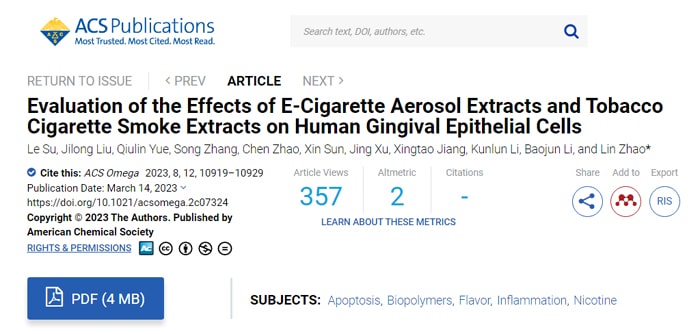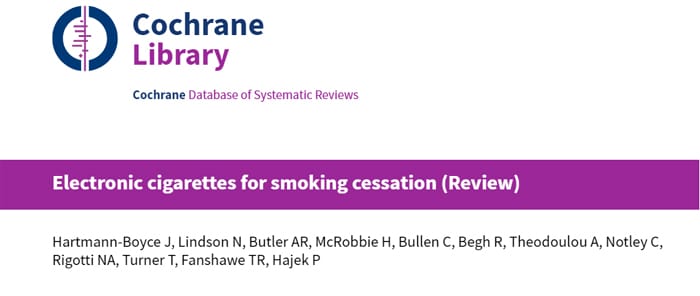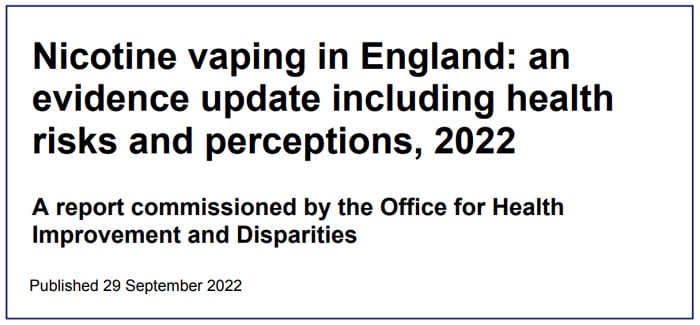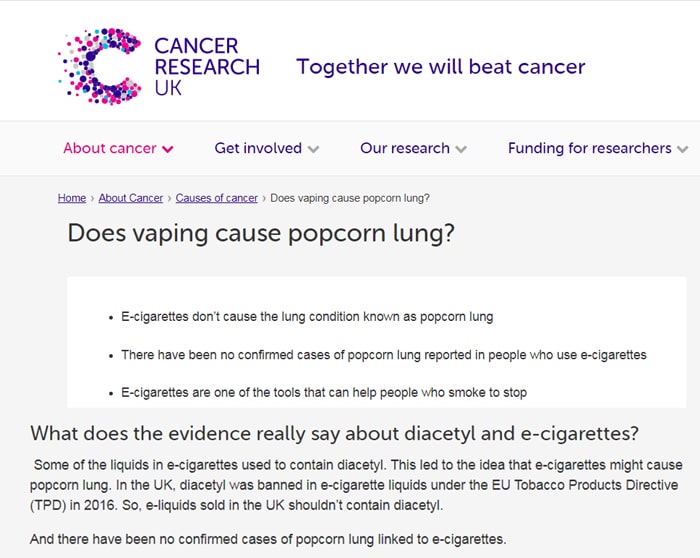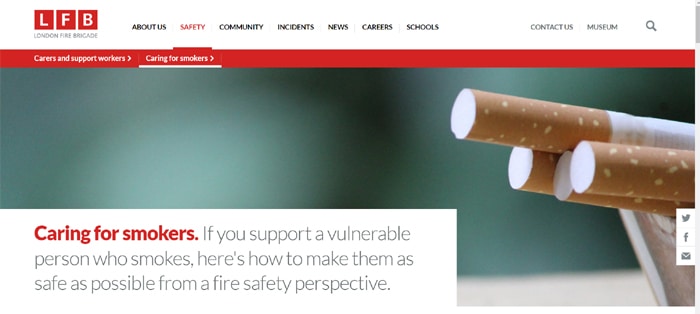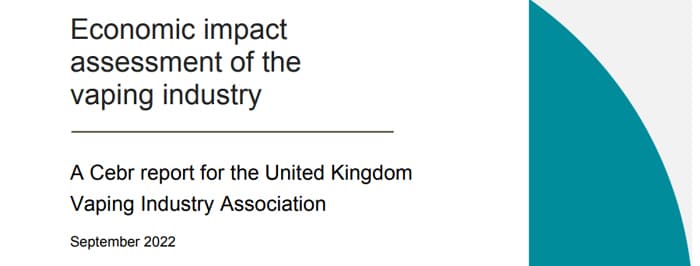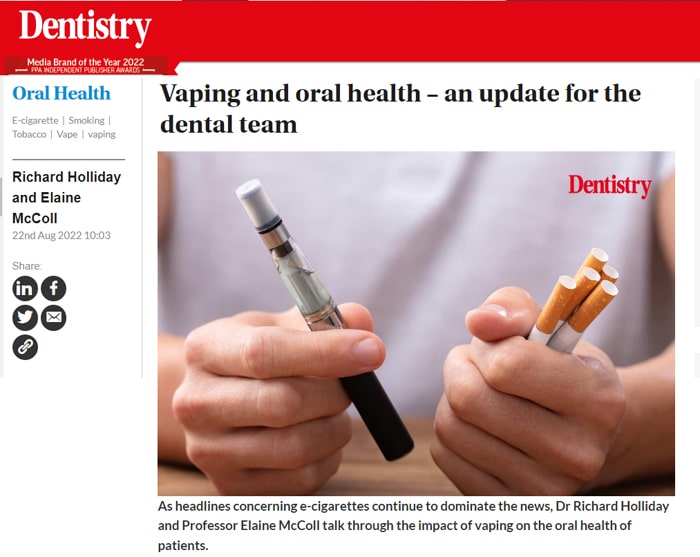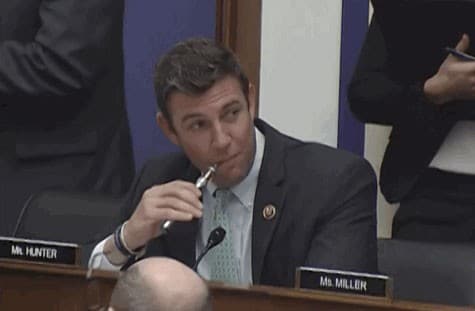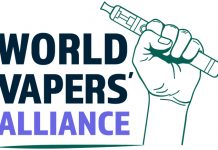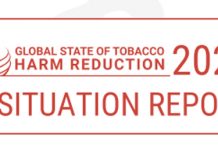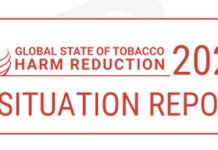E Cig Research, Studies, Reports & Resources
There have been numerous studies on electronic cigarettes over the years with the information being difficult to access from any one place. That brings us to our e-cigarette research resource list that not only covers the all-important scientific studies on product and e-liquid but important opinion pieces and mainstream news reports as well. We have also added some sites which offer facts to health professionals regarding vaping and health.
This is an ever growing list that we are constantly adding to but if you think we have missed a study, report or new piece that you think should be on the list then please get in touch here or add to the comments section below!
Also make sure to check out our News section for news on legislation, regulation and new studies.
Editor’s note: “Full article available” means that the article is available for free, online, without a journal subscription.
Safer Nicotine Wiki
Information on Tobacco Harm Reduction (THR), Nicotine and all safer alternatives to smoking combustible cigarettes.
I quote…
“We aim to provide information for Advocates, PolicyMakers, LawMakers, Interested members of the public (remember you are the ‘public’ in public health), Scientists and Researchers, Health Workers and Medical Doctors indeed anyone who would like reliable information. Most of the time that links directly to the original science, we aim to provide useful summaries/comment where possible as a guide, we encourage you to read the full paper if you wish.”
“This wiki has been assembled by a team of keen volunteers, free of funding from any source. If you would like to contribute to the expansion and evolution of this resource, please see the how to contribute section on the main page.”
Visit the site to look up anything you want to source on safer Nicotine, many advocates are on there too – including us!
The link to the site is – Safer Nicotine Wiki.
April, 2023
“Evaluation of the Effects of E-cigarette Aerosol Extracts and Tobacco Cigarette Smoke Extracts on Human Gingival Epithelial Cells”
This study investigated how cigarette smoke and vape aerosols impacted gum health and structure.
You can read the study here or download the full PDF here.
“Electronic Cigarettes for Smoking Cessation”
A collection of reviews and studies related to e-cigarettes – collated by Cochrane – who are a not for profit organisation which collects evidence on health related subjects.
Visit the collection here – Electronic Cigarettes for Smoking Cessation.
This is regularly updated and is also used as the basis of the “Let’s Talk E-cigarettes” podcasts – which again are updated regularly with guests.
“Nicotine Vaping in England: 2022 evidence update”
This is a review published by the UK Government into vaping by leading independent tobacco experts.
View the document here – Nicotine Vaping in England: 2022 evidence update.
“Using e-cigarettes to stop smoking”
A guide from the UK NHS on vaping to quit smoking – includes all the facts to help people decide to try e-cigarettes.
View the guide here – Using e-cigarettes to stop smoking.
“Nicotine Vaping in England: an evidence update including health risks and perceptions, 2022”
This report was commissioned by the Office for Health Improvement and Disparities of the UK Government.
The report was produced by King’s College London Tobacco and Alcohol research group and Action on Smoking and Health (ASH).
View the full PDF here – Nicotine Vaping in England.
“Stop Smoking In Pregnancy”
This guide from the NHS is directed towards pregnant smokers. It advises on all methods of quitting including vaping and their safety.
Read more here – Stop Smoking In Pregnancy.
“Does Vaping Cause Popcorn Lung?”
An excellent article from Cancer Research UK debunking the oft circulated myth of Popcorn lung!
A great one to share with people who ignorantly quote this myth!
View the article here – Does Vaping Cause Popcorn Lung?
“Is Vaping Harmful?”
Another great read from Cancer Research UK explaining e-cigarettes and also dispels myths such as “EVALI”.
This is worth sharing around too!
Read here – Is Vaping Harmful?
“Caring for smokers”
This piece has been published by the London Fire Brigade in relation to caring for vulnerable people who smoke.
The article also suggests aiding them to quit using vaping and the fact it is safer than smoking. It also links to page all about vaping and battery safety.
Have a gander – Caring for smokers.
“Economic impact assessment of the vaping industry”
A report by CEBR was commissioned by the UKVIA (UK Vaping Industry Association) to examine the financial impact of vaping in the UK.
Some surprises in here – all good for vapers though!
Full PDF is available here – Economic impact assessment of the vaping industry.
“Harm Reduction and Vaping Fact Sheet”
A great fact sheet discussing all types of harm reduction and vaping from the WVA (World Vapers’ Alliance).
Included are plenty of facts showing how effective vaping is when quitting smoking and implications of various methods of regulation.
The full PDF is here – Harm Reduction and Vaping Fact Sheet.
NCSCT Guides
The NCSCT (National Centre for Smoking Cessation and Training) in the UK publishes many documents to aid health professionals assist clients to quit smoking.
All areas of cessation assistance are covered and vaping is viewed as a positive step to help stop smoking.
Well worth a read and to share with any health professionals you know!
The site also has plenty of resources for all aspects of smoking cessation treatment.
A great site – NCSCT.
“Vaping and oral health – an update for the dental team”
The website “Dentistry.co.uk” published a guide for dental professionals about vaping and oral health.
Many Dentists still claim that vaping is as bad as smoking – but this article busts some of the common myths with actual facts.
A great one to share with those in the Dental profession!
Read more here – Vaping and oral health – an update for the dental team.
January, 2019
“Attitudes to E-Cigarettes and Cessation Support for Pregnant Women from English Stop Smoking Services”
January 2019 Various UK Universities
- Results of study: https://www.ncbi.nlm.nih.gov/pmc/articles/PMC6338976/
A study looking at the extent of pregnant women in the UK using e-cigarettes as a smoking cessation tool and the public’s perception.
Conclusions:
…the evolving landscape for e-cigarettes leaves some Stop Smoking Services more likely to advise or encourage their use in pregnancy, whilst others remain unlikely to advise their pregnant clients to do so. More pregnancy specific evidence on e-cigarette safety and effectiveness to inform official guidance, should help to ensure consistent messages across all SSS and other maternity services.
Read the full report here:
https://www.ncbi.nlm.nih.gov/pmc/articles/PMC6338976/
December, 2018
“Vaping as an alternative to smoking relapse following brief lapse.”
December 2018 Various Authors Including New Nicotine Alliance and Universities
- Results of study: https://www.ncbi.nlm.nih.gov/pubmed/30488650
This article aims to explore how smoking lapse is experienced by those who vape to quit smoking.
Conclusions:
For ex-smokers, vaping offers a pleasurable, viable pharmacological, but also social and psychological, substitution option for smoking and potentially powerfully alters the experience and threat of any lapse.
Read the full report here:
https://www.ncbi.nlm.nih.gov/pubmed/30488650
November, 2018
“GPs’ and nurses’ perceptions of electronic cigarettes in England”
November 2018 Melissa Stepney, Paul Aveyard and Rachna Begh – University of Oxford
- Results of study: https://bjgp.org/content/69/678/e8
So what do doctors and nurses in England think of e-cigarettes?
Conclusions:
Current dissemination strategies for guidelines are not effective in reaching practitioners, who are offering more cautious advice about e-cigarettes than guidelines suggest is reasonable.
Read the full report here:
https://bmcmedicine.biomedcentral.com/articles/10.1186/s12916-018-1195-3
November, 2018
“Are smokers who are regularly exposed to e-cigarette use by others more or less motivated to stop or to make a quit attempt? ”
November 2018 Sarah Jackson Lead Author
- Results of study: https://bmcmedicine.biomedcentral.com/articles/10.1186/s12916-018-1195-3
Concerns have been raised that observing other people using e-cigarettes may undermine motivation to quit by renormalising smoking.
Conclusions:
Smokers who report regular exposure to other people using e-cigarettes are more likely to report past quit attempts and high current motivation to quit, but there does not appear to be an independent association with motivation or quit attempts after adjustment for their own current use of e-cigarettes. In contrast, reported exposure to other people using cigarettes was independently and negatively associated with high motivation.
Read the full report here:
https://bmcmedicine.biomedcentral.com/articles/10.1186/s12916-018-1195-3
October, 2018
“Harm perceptions of electronic cigarettes and nicotine: A nationally representative cross-sectional survey of young people in Great Britain.”
October 2018 National Addiction Centre and ASH
- Results of study: https://www.ncbi.nlm.nih.gov/pubmed/30300799
Do young people understand that vaping is far safer than smoking and how do they perceive nicotine?
Conclusions:
Many young people have inaccurate harm perceptions of e-cigarettes and nicotine. Accurate e-cigarette and nicotine harm perceptions were associated with one another. E-cigarette use was associated with accurate e-cigarette but not nicotine harm perceptions; smoking was not associated with either.
Read the full report here:
https://www.ncbi.nlm.nih.gov/pubmed/30300799
October, 2018
“E-cigarette use in England 2014-17 as a function of socio-economic profile.”
October 2018 Department of Behavioural Science and Health, University College London, London, UK.
- Results of study: https://www.ncbi.nlm.nih.gov/pubmed/30306714
In England is it the rich or the poor that vapes the most?
Conclusions:
From 2014 to 2017 in England, e-cigarette use was greater among smokers from higher compared with lower socio-economic status (SES) groups, but this difference attenuated over time. Use during a quit attempt was similar throughout SES groups. Use by long-term ex-smokers increased over time among all groups and was consistently more common in lower SES groups.
Read the full report here:
https://www.ncbi.nlm.nih.gov/pubmed/30306714
August, 2018
“Developing E-cigarette friendly smoking cessation services in England: staff perspectives”
August 2018 Harm Reduction Journal
This study aimed to investigate the uptake and usage of e-cigarette guidance, from the perspective of the staff inside smoking cessation clinics.
Conclusions:
On-the-ground enactment of e-cigarette friendly services is varied as well as reflective of the wider policy and regulatory environment. Although the context of English stop smoking services is one of austerity and change, there are opportunities for active engagement with e-cigarettes to achieve overall cessation goals. For this to occur, training, policy consistency and sharing best practice are needed.
Read the full report here:
https://harmreductionjournal.biomedcentral.com/articles/10.1186/s12954-018-0244-8
July, 2018
“Electronic Cigarette: A Longitudinal Study of Regular Vapers.”
June 2018 Institute of Global Health, Faculty of Medicine, University of Geneva, Switzerland.
- Results of study: https://www.ncbi.nlm.nih.gov/pubmed/28591788
Looking at the change in vaping and smoking behaviours over 12 months in regular vapers.
Conclusions:
After 12 months, enjoyment and relapse prevention were the most important reasons to vape. Rates of relapse to smoking were low in former smokers and quit rates were high in current smokers. Stopping vaping was associated with relapsing to smoking.
Read the full report here:
https://www.ncbi.nlm.nih.gov/pubmed/28591788
June, 2018
“Perceptions and Reasons Regarding E-Cigarette Use among Users and Non-Users: A Narrative Literature Review”
June 2018 Various Authors From the |Netherlands and Belgium
- Results of study: https://www.ncbi.nlm.nih.gov/pmc/articles/PMC6025300/
This paper aims to provide an in-depth understanding of the attractiveness of e-cigarettes for several different groups.
Conclusions:
Tailored information about e-cigarettes for the different user groups is necessary to correct misperceptions about e-cigarettes and highlight the risks and benefits of e-cigarette use.
Read the full report here:
https://www.ncbi.nlm.nih.gov/pmc/articles/PMC6025300/
June, 2018
“’Real-world’ compensatory behaviour with low nicotine concentration e-liquid: subjective effects and nicotine, acrolein and formaldehyde exposure.”
June 2018 Various Authors From UK and USA
- Results of study: https://www.ncbi.nlm.nih.gov/pubmed/29882257
To compare the effects of (i) high versus low nicotine concentration e-liquid, (ii) fixed versus adjustable power and (iii) the interaction between the two on: (a) vaping behaviour, (b) subjective effects, (c) nicotine intake and (d) exposure to acrolein and formaldehyde in e-cigarette users vaping in their everyday setting.
Conclusions:
Use of a lower nicotine concentration e-liquid may be associated with compensatory behaviour (e.g. higher number and duration of puffs) and increases in negative affect, urge to vape and formaldehyde exposure.
Read the full report here:
https://www.ncbi.nlm.nih.gov/pubmed/29882257
May, 2018
“Are Some E-Cigarette Users “Blowing Smoke”?: Assessing the Accuracy of Self-Reported Smoking Abstinence in Exclusive E-Cigarette Users”
May 2018 Roswell Park Cancer Centre NY USA
- Results of study: https://www.ncbi.nlm.nih.gov/pmc/articles/PMC6468120/
Researchers looking to see if vapers are basically ‘lying’ when claiming e-cigarettes helped them quit!
Conclusions:
Our analyses suggest that approximately one in six respondents who reported only using e-cigarettes may have smoked tobacco cigarettes. Our analyses also suggest that caution is needed when relying on self-reported tobacco use status among ex-smokers, as one in six respondents who reported quitting within the past 6 months may still smoke, at least occasionally.
Read the full report here:
https://www.ncbi.nlm.nih.gov/pmc/articles/PMC6468120/
April, 2018
“Are Electronic Cigarettes an Effective Aid to Smoking Cessation or Reduction Among Vulnerable Groups?”
April 2018 Society for Research on Nicotine and Tobacco
- Results of study. https://www.ncbi.nlm.nih.gov/pubmed/29608714
Can vaping help vulnerable groups such as the homeless and those with a mental illness help quit smoking?
Conclusions:
Further research is needed to identify the most appropriate device types for practicality and safety, level of support required in e-cigarette interventions, and to compare e-cigarettes with current best practice smoking cessation support among vulnerable groups.
Read the full report here:
https://www.ncbi.nlm.nih.gov/pubmed/29608714
April, 2018
“E-cigarettes and vaping: policy, regulation and guidance ”
April 2018 UK Government
- UK Gov Policies On E-Cigs. https://www.gov.uk/government/collections/e-cigarettes-and-vaping-policy-regulation-and-guidance
Whilst not a study as such this is the central UK Government hub for all vaping and e-cigarette policies
Included:
- England’s policy on e-cigarettes
- UK e-cigarettes regulation
- E-cigarettes evidence reviews
- E-cigarettes public health consensus statement
- Advice for organisations on vaping policies
Read the full report here:
https://www.gov.uk/government/collections/e-cigarettes-and-vaping-policy-regulation-and-guidance
March, 2018
“Vaping versus JUULing: how the extraordinary growth and marketing of JUUL transformed the US retail e-cigarette market”
March 2018 Georgia State University USA
An examination of the growth and marketing of the JUUL pod based e-cig system
Recommendations included:
In the short 3-year period 2015–2017, JUUL has transformed from a little-known brand with minimum sales into the largest retail e-cigarette brand in the USA, lifting sales of the entire e-cigarette category. Its US$150 million retail sales in the last quarter of 2017 accounted for about 40% of e-cigarette retail market share. While marketing expenditures for JUUL were moderate, the sales growth of JUUL was accompanied by a variety of innovative, engaging and wide-reaching campaigns on Twitter, Instagram and YouTube, conducted by JUUL and its affiliated marketers.
February, 2018
“Evidence review of e-cigarettes and heated tobacco products 2018: executive summary ”
February 2018 Public Health England
A full review of the health effects of vaping and HNB devices in England with a whole host of positive recommendations for national and local governments
Recommendations included:
Misperceptions of the relative harms of nicotine replacement therapy and e-cigarettes compared with cigarettes need to be addressed, particularly among smokers who would benefit from switching to nicotine replacement therapy or e-cigarettes.
Read the full report here:
January, 2018
“No adverse health impacts from long term vaping — Study ”
January 2018 Fontem Ventures
- Results of study. https://www.eurekalert.org/pub_releases/2018-01/ac-nah011618.php
A detailed 2 year long study looking at the health impact of e-cigarettes on vapers
Recommendations included:
This study shows that after two years of continual e-cigarette use, there were no signs of serious health complications in smokers.
Read the full report here:
https://www.eurekalert.org/pub_releases/2018-01/ac-nah011618.php
December, 2017
“E-cigarettes inquiry”
December 2017 Royal College of Physicians UK
- Results of study. https://www.rcplondon.ac.uk/guidelines-policy/e-cigarettes-inquiry
The RCP makes a number of recommendations including the UK Government SHOULD promote e-cigs as a smoking cessation aid
Research concluded:
Although it is not possible to estimate the long-term health risks associated with e-cigarettes precisely, the available data suggest that they are unlikely to exceed 5% of those associated with smoked tobacco products, and may well be substantially lower than this figure
Read the full report here:
https://www.rcplondon.ac.uk/guidelines-policy/e-cigarettes-inquiry
December, 2017
“E-cig use increases risk of beginning tobacco cigarette use in young adults”
December 2017 University of Pittsburgh Schools of the Health Sciences
- Results of study. https://www.sciencedaily.com/releases/2017/12/171211090733.htm
Is vaping a gateway to tobacco use among young people?
Research concluded:
Young adults who use electronic cigarettes are more than four times as likely to begin smoking tobacco cigarettes within 18 months as their peers who do not vape, according to new research.
Read the full report here [long since refuted!]:
https://www.sciencedaily.com/releases/2017/12/171211090733.htm
November, 2017
“Health impact of E-cigarettes: a prospective 3.5-year study of regular daily users who have never smoked”
November 2017 Riccardo Polosa
- Results of study. https://www.nature.com/articles/s41598-017-14043-2
Study looking at the possible long term risks to health from vaping and e-cigarettes
Research concluded:
While the sample size was small, the results of this study may provide some preliminary evidence that long-term use of ECs is unlikely to raise significant health concerns in relatively young users.
Read the full report here:
https://www.nature.com/articles/s41598-017-14043-2
October, 2017
“Changing Behaviour – Electronic Cigarettes”
October 2017 British Psycholigical Society
- Results of study. https://www.bps.org.uk/sites/bps.org.uk/files/Policy/Policy%20-%20Files/Changing%20behaviour%20-%20electronic%20cigarettes.pdf
Looking at the psychological aspects of vaping vs smoking
Research concluded:
allow e-cigarettes to further evolve and improve so they are safer, more appealing and satisfying for more smokers. This means allowing higher nicotine strength e-liquid to remain on the market where there is no evidence to suggest harm, and avoid unnecessary burdensome and costly procedures for manufacturers so they can focus on improving the safety and efficacy of their products.
Read the full report here:
October, 2017
“They’re heating up: Internet search query trends reveal significant public interest in heat-not-burn tobacco products”
October 2017 Plos One
Looking at the rise in Heat Not Burn [HNB] products
Research concluded:
Health agencies, policy-makers and health practitioners should fill this gap and preempt rising popularity of these products by investing in tobacco control research and strategies for heat-not-burn tobacco products now.
Read the full report here:
https://journals.plos.org/plosone/article/authors?id=10.1371/journal.pone.0185735
September, 2017
“Vape shops: who uses them and what do they do?”
September 2017 BMC Public Health
Looking at what products are sold in vape shops and how they’re marketed
Research concluded:
The majority of vape shop customers are vapers who have quit smoking. Shop staff play a central role in providing customers with product information, and many provide smoking cessation advice. Further research is needed to investigate the potential for smoking cessation interventions in vape shops, including the extent to which these would appeal to non-vapers.
Read the full report here:
https://bmcpublichealth.biomedcentral.com/articles/10.1186/s12889-018-5467-9
September, 2017
“A cloud on the horizon–a survey into the use of electronic vaping devices for recreational drug and new psychoactive substance (NPS) administration ”
August 2017 2017 QJM: An International Journal of Medicine
- Results of study. https://www.mdpi.com/1660-4601/14/9/973/htm
Looking at the new phenomena of vaping on drugs such as cannabis
Research concluded:
This novel culture could increase the prevalence of use; decrease the age of onset of use and lead to more problematic use of cannabis and other recreational drugs via vaping devices.
Read the full report here:
https://www.mdpi.com/1660-4601/14/9/973/htm
August, 2017
“Young People’s Use of E-Cigarettes across the United Kingdom: Findings from Five Surveys 2015–2017”
August 2017 2017 Public Health England
- Results of study. https://www.mdpi.com/1660-4601/14/9/973/htm
The study looked at e-cigarette use of the UKs 11-16 year olds and found that most definitely vaping IS NOT a gateway to smoking for young people.
Lead author Linda Bauld said:
Recent studies have generated alarming headlines that e-cigarettes are leading to smoking. Our analysis of the latest surveys from all parts of the United Kingdom, involving thousands of teenagers shows clearly that for those teens who don’t smoke, e-cig experimentation is simply not translating into regular use.
Read the full report here:
https://www.mdpi.com/1660-4601/14/9/973/htm
July, 2017
“Should e-cigarette use be included in indoor smoking bans?”
July 2017 University of Otago NZ
- Results of study. https://www.mdpi.com/1660-4601/14/9/973/htm
Researchers suggesting vaping should be banned in all indoor areas
Research concluded:
Considering the above arguments collectively, we believe that, from a public health perspective, central and local governments should adopt regulations that effectively determine that all designated indoor smoke-free areas are also vape-free areas.
Read the full report here:
https://www.mdpi.com/1660-4601/14/9/973/htm
July, 2017
“E-cigarette use and associated changes in population smoking cessation: evidence from US current population surveys’”
July 2017 2017 Professor Shu-Hong Zhu via BMJ
- Synopsis of study via BMJ. https://www.bmj.com/content/358/bmj.j3262
The object of this study was to see if there was any correlation between the increased use of e-cigarettes and the drop in the amount of smokers in the USA.
The data was gleaned from five of the US Current Population Survey-Tobacco Use Supplements.
Unsurprisingly the results showed that yes the fact that more people were vaping meant a significant drop in those smoking!
The study concluded:
The substantial increase in e-cigarette use among US adult smokers was associated with a statistically significant increase in the smoking cessation rate at the population level. These findings need to be weighed carefully in regulatory policy making regarding e-cigarettes and in planning tobacco control interventions.
Read the full report here:
https://www.bmj.com/content/358/bmj.j3262
June, 2017
“England Smoking Statistics’”
June 2017 2017 NHS England
- Full data from NHS. https://webarchive.nationalarchives.gov.uk/20180328130852tf_/http://content.digital.nhs.uk/catalogue/PUB24228/smok-eng-2017-rep.pdf/
- Fulldata from office of National Statistics https://www.ons.gov.uk/peoplepopulationandcommunity/healthandsocialcare/healthandlifeexpectancies/bulletins/adultsmokinghabitsingreatbritain/2016
Smoking numbers reportedly dropped to an all time low with more folks taking up vaping.
You can read the full report via the links but in a nutshell:
- 15.5% of adults aged 18 or above currently smoke, down from 19.9% in 2010.
- The proportion of all hospital admissions attributed to smoking-related illness was 4% in 2015/16, down from 6% in 2005/06.
- 11% of mothers were smokers at the time of delivery in 2016/17, down from 15% in 2006/07.
- Tobacco was 27% less affordable in 2016 than it was in 2006.
- Around 5% of adults in England currently use e-cigarettes.
A spokesman for Public Health England said:
What is really fantastic news is that this steep decline is even greater among young adults (aged 18 to 24), where smoking has fallen by a staggering quarter since 2010, reversing a long trend
Read the full report here:
May, 2017
“More than half of UK vapers ‘have given up smoking’”
May 2017 2017 ASH – Action on Smoking and Health
- Full study from ASH. http://ash.org.uk/download/use-of-e-cigarettes-among-adults-in-great-britain-2017/
It was a case of great news and some not so good news in the survey into the UKs smoking habits.
More than half the UK vapers have completely given up smoking – that equates to 1.5million smokers kicking the habit via e-cigarettes.
Despite this fantastic news Deborah Arnott from ASH said it was “excellent news” but warned that vaping had reached its peak [we shall see lol] adding:
The rapid growth in e-cigarette use has come to an end
Read the full report here:
http://ash.org.uk/download/use-of-e-cigarettes-among-adults-in-great-britain-2017/
April, 2017
“Does the Regulatory Environment for E-Cigarettes Influence the Effectiveness of E-Cigarettes for Smoking Cessation?”
April 2017 Nicotine and Tobacco Research
- Full study from Nicotine and Tobacco Research. https://academic.oup.com/ntr/article/19/11/1268/3061874?login=false
Simply put this study looked at the question that if Governments placed too many harsh restrictions on e-cigarettes would less people use them to quit smoking.
Sounds silly but as the TPD and TRPR looms this is a serious question given the draconian laws about to be placed on vaping!
The study unsurprisingly found that yes – harsh laws do stop smokers from switching to vaping.
A spokesman said:
Compared to unassisted quitting (ie, no medications or ECs), smokers who used ECs for quitting from countries with less restrictive EC policy environments were more likely, whereas smokers who used ECs for quitting from countries with more restrictive EC policies were less likely, to report sustained abstinence for at least 30 days
Read the full report here:
https://academic.oup.com/ntr/article/19/11/1268/3061874?login=false
March, 2017
“E-cigarettes a gateway to smoking? Not likely”
March 2017Buffalo University USA
- Synopsis from Science Daily. https://www.sciencedaily.com/releases/2017/03/170313135003.htm
A simple question: Are e-cigarettes a gateway product that lead more people, especially teens, to smoke regular cigarettes?
And the answer coming from scientists from both the University of Buffalo and Michigan was a resounding NO!
A spokesman said:
Our analysis focused on the risks for moving from e-cigarettes to cigarettes. There is little evidence that those who have never smoked cigarettes or never used other tobacco products and first try e-cigarettes will later move on to cigarette usage with great frequency or daily, regular smoking
Read the precis of the report here:
https://www.sciencedaily.com/releases/2017/03/170313135003.htm
February, 2017
“Nicotine, Carcinogen, and Toxin Exposure in Long-Term E-Cigarette and Nicotine Replacement Therapy Users: A Cross-sectional Study”
February 2017Cancer Research UK
- Only a precis of the report available free. https://annals.org/aim/article/2599869/nicotine-carcinogen-toxin-exposure-long-term-e-cigarette-nicotine-replacement
A new study funded by Cancer Research UK categorically proves that switching from smoking to e-cigarettes significantly reduces the risk of cancer.
Former smokers who had turned to vaping for at least six months were tested against those using NRT [nicotine replacement therapy – patches etc] – smokers and dual users of both NRT and e-cigarettes.
Researchers tested saliva and urine samples and found:
The e-cigarette–only users had significantly lower NNAL levels than all other groups”
NNAL is a carcinogenic [cancer giving] “product formed after 4-(methylnitrosamino)-1-(3-pyridyl)-1-butanone (NNK) enters the body. NNK belongs to a group of chemicals called tobacco-specific n-nitrosamines (TSNA).
Read the precis of the report here:
August, 2016
“Beliefs, Practices, and Self-efficacy of US Physicians Regarding Smoking Cessation and Electronic Cigarettes: A National Survey”
August 2016 Nicotine and Tobacco Research
- Only a precis of the report available free. https://academic.oup.com/ntr/article-abstract/19/2/197/2631692?redirectedFrom=fulltext&login=false
In a study by the NTR of 1,500 US doctors 70% of them say vaping and e-cigarettes can and do help people stop smoking.
Add to that 50% of the surveyed doctors saying they believe e-cigs can reduce health risks and the FDA recent Deeming act looks even more fragile.
The report adds that more and more American doctors are recommending to patients that e-cigarettes are a good way of quitting smoking.
August, 2016
“FDA’s New Regulations for E-Cigarettes, Cigars, and All Other Tobacco Products”
August 2016 FDA
- Full Details of the FDA Deeming Act http://www.fda.gov/TobaccoProducts/Labeling/RulesRegulationsGuidance/ucm394909.htm
On August 8th 2016 the new laws governing vaping for US vapers – retailers and manufacturers came into force.
There is a two-year period before every single rule passes into law but all ready pro-vaping advocates are warning of dire consequences to both vapers health and the vaping industry as a whole.
You can read exactly what the FDA’s Tobacco Control Act means for you here:
http://www.fda.gov/TobaccoProducts/Labeling/RulesRegulationsGuidance/ucm394909.htm
July 14th, 2016
“The Application of a Decision-Theoretic Model to Estimate the Public Health Impact of Vaporized Nicotine Product Initiation in the United States”
July 2016 Nicotine and Tobacco Research
- Only a precis of the report available free. https://academic.oup.com/ntr/article/19/2/149/2631691?login=false
In similar findings to Public Health England the report by the US based NTR adds further scientific weight to the vaping vs smoking arguments.
They say that smokers turning to electronic cigarettes would result in a 21% decrease in smoking related diseases and deaths adding 20% in ‘life years lost’ through smoking.
To read a full copy of the study you’ll need to sign up to the Oxford Journals – however you can read a summary of the Nicotine and Tobacco Research document here:
https://academic.oup.com/ntr/article/19/2/149/2631691?login=false
July, 2016
“Use of electronic cigarettes in pregnancy”
July 2016 Smoke Free Action
- Full PDF available. http://www.smokefreeaction.org.uk/
The Smoke Free Action Coalition is made up of a groups of health organizations and charities and its sole aim is to help reduce the harm caused by tobacco.
This report is aimed at midwives and other health care professionals and lays out advice to pregnant mothers who find it difficult or impossible to quit smoking whilst pregnant.
Whilst quitting tobacco is of course preferable whilst pregnant the group has taken a refreshingly pragmatic approach to this most sensitive topic.
You can read our article on the subject: https://www.ecigclick.co.uk/vaping-when-pregnant/
Download the full Smoke Free Action pdf here:
http://www.smokefreeaction.org.uk/
July, 2016
“Use of e-cigarettes in public places and workplaces”
July 2016 Public Health England
- Full PDF available. https://www.gov.uk/government/uploads/system/uploads/attachment_data/file/534586/PHE-advice-on-use-of-e-cigarettes-in-public-places-and-workplaces.PDF
Designed for ‘no smoking’ policy makers this report is meant as a guide for employers – councils and businesses.
In a nutshell it suggests vapers should be considered separate from smokers when it comes to making smoking policies including creating ‘smoke-free vaping areas.’
The report also looks at the impact vaping has had on the cessation of smoking tobacco and suggests ‘there is no risk’ to bystanders from the vapor.
Read our article on the subject: https://www.ecigclick.co.uk/vaping-should-be-allowed-in-the-workplace/
Download the full Public Health England pdf here:
July, 2016
“E-Cigarettes – a developing public health concensus”
July 2016 Public Health England
Public Health England along with various other UK based health organizations including Cancer Research UK, the Royal College of Physicians and the British Lung Foundation – has released a ‘statement of consensus’ around the whole subject of e-cigarettes and vaping.
The report makes it clear that PHE believes vaping is considerably safer than smoking and promises to continuing giving the wider public up to date reports and studies on the long term effects the use of e-cigarettes may have.
Download the full PHE pdf here:
June 25th, 2016
“New study: 6.1 million Europeans have quit smoking with the use of electronic cigarettes”
June 2016 ecigarette-Research.org
- Only a precis available. https://www.ncbi.nlm.nih.gov/pubmed/27338716
Well known pro-vaping scientists Dr. Konstantinos Farsalinos and Professor Konstantinos Poulas say their research shows a staggering 6.1million Europeans have quit smoking thanks to vaping and electronic cigarettes.
And the study found that more than 9million of smokers have cut down considerably on tobacco consumption thanks to vaping.
Known as the Eurobarometer survey it’s believed to be the largest ever study on e-cigarette use in Europe carried out covering all 28 EU states.
To read a full copy of the study you’ll need to sign up to the US National Library of Medicine National Institutes of Health – however you can read a press release from the authors here:
http://www.ecigarette-research.org/research/index.php/research/research-2016/241-eurob
May, 2016
“DIRECTIVE 2014/40/EU – TDP the complete legislation on tobacco and tobacco products”
May 2016 The European Parliament and Council
May 20th 2016 was D-Day for European vapers and vaping manufacturers.
New laws governing the sale – promotion and manufacture of vaping and e-cigarette products comes into force.
How this will affect UK vapers post Brexit is still unclear.
Read: https://www.ecigclick.co.uk/tpd-vapers-brexit
Download full EU TPD directive in PDF here:
https://ec.europa.eu/health/tobacco/docs/dir_201440_en.pdf
April, 2016
“Promote e-cigarettes widely as substitute for smoking says new RCP report”
April 28. Royal College of Physicians
- Full PDF available. https://www.rcplondon.ac.uk/news/promote-e-cigarettes-widely-substitute-smoking-says-new-rcp-report
A new report from the Royal College of Physicians in the UK has made some key recommendation regarding e cigarettes. The main points stated were that there is no evidence that e cigarettes are a gateway to smoking for young people or re-normalising smoking.
They go on to state “In the interests of public health it is important to promote the use of e-cigarettes, NRT and other non-tobacco nicotine products as widely as possible as a substitute for smoking in the UK.
Key statements can be found here:
https://www.rcplondon.ac.uk/projects/outputs/nicotine-without-smoke-tobacco-harm-reduction-0
February, 2016
“ASH [Action on Smoking and Health] Briefing on Electronic cigarettes ”
February. ash.org.uk
- Full PDF available. http://ash.org.uk/stopping-smoking/ash-briefing-on-electronic-cigarettes-2/
Action on Smoking and Health [ASH] lays out its policy on e-cigarettes and vaping in this ‘ASH Briefing’ paper.
Drawing on a ton of their own and other scientific research the report concludes vaping is ‘considerably safer than smoking and covers such topics as:
- How safe are e-cigarettes
- The dangers of so called ‘passive vaping’
- Are e-cigarettes helping people quit smoking?
- Are e-cigarettes a gateway to tobacco
- How are e-cigarettes regulated
Download full PDF report:
http://ash.org.uk/stopping-smoking/ash-briefing-on-electronic-cigarettes-2/
“Electronic cigarettes: A briefing for stop smoking services”
February 25. NCSCT.co.uk
- Full PDF available. https://www.ncsct.co.uk/usr/pub/Electronic%20cigarettes.%20A%20briefing%20for%20stop%20smoking%20services.pdf
A new document by the National Centre for Smoking Cessation and Training in partnership with Public Health England provides a balanced view on e cigarettes specifically to advise smoking cessation practitioners and services.
In the guide they highlight (among many things) a summary of e cig research, guidance for new users on common e cigarette questions and advise on choosing e-liquids.
A summary of interesting points has also been been compiled by Clive Bates:
https://www.clivebates.com/blending-evidence-and-empathy-a-new-guide-to-e-cigarettes/
“Vaping Emits Less Formaldehyde than Previously Thought”
February 25. vice.com / Science Direct
- Full article available. https://www.vice.com/en_us/article/xygded/vaping-emits-less-formaldehyde-than-previously-thought-health-smoking-ecigarettes-vape-news
A recent article by Kaleigh Rogers, science journalist for Motherboard (division of Vice.com), reports on a new vaping study into formaldehyde in e liquids. The original study showed that vaping e liquid contains high levels of formaldehyde.
The original study didn’t take into account the way e cig users vape and simply highlighted results from the highest wattage setting on the e cigarette device.
In reality vaping in this manner would cause dry hits making an extremely unpleasant and unpalatable vape.
The new study findings were based on real world e cig use and found formaldehyde levels to be lower overall than the previous study and lower overall than emissions from tobacco cigarettes. New research study can be found here: https://www.sciencedirect.com/science/article/pii/S0273230015301549
“U.S. Rep. Duncan Hunter vapes during hearing in show of opposition to proposed ban of e-cigs on planes”
February 11. CNN
- Full article available. https://edition.cnn.com/2016/02/11/politics/duncan-hunter-vaping-congressman-plane-amendment/
GOP congressman Duncan Hunter (R-California) vaped during a hearing to ban in-flight vaping.
The Transportation & Infrastructure Committee members voted to adopt the in-flight vaping ban proposed by Eleanor Holmes Norton (Washington, D.C. Del). Hunter’s opposition was proposed as he sat puffing on his e-cigarette.
He said, “There’s no combustion. There’s no carcinogens. What the gentlelady did not say is smoking has gone down as the use of vaporizers has gone up. There is no burning. There’s nothing noxious about this whatsoever.”
He asked his colleagues to block the ban, but the committee added the amendment to a pending aviation bill.
Most airlines have already banned vaping during flights.
“Benefits of E-Cigarettes Among Heavy Smokers Undergoing a Lung Cancer Screening Program: Randomized Controlled Trial Protocol.”
February 3. Journal of Medical Internet Research
- Full article available. https://www.ncbi.nlm.nih.gov/pubmed/26842790
Researchers are testing the effectiveness of e-cigarettes in the COSMOS II lung cancer prevention program at the European Institute of Oncology in order to reduce tobacco use to lower lung cancer risks in smokers.
The study involves a three-month program where e-cigarettes will be used to reduce participants’ smoking-related respiratory symptoms like shortness of breath, cough, phlegm, and mouth irritation through reduced smoking of tobacco cigarettes.
Researchers will also look at the psychological and behavioral effects of the program.
The study is currently open and still recruiting.
The results of this study will help determine if heavy smokers at high risk for a number of smoking-related diseases will benefit from a partial or complete shift to e-cigarettes.
Updates will be made to this entry when results of this e cig study have been published.
January, 2016
“Switching from smoking to e-cigarette use leads to improvement in blood pressure”
January 14. E Cigarette Research
- Full article available. http://www.ecigarette-research.org/research/index.php/research/research-2015/237-bp
A new study, published in the journal Internal and Emergency Medicine, evaluated participants in a randomized study that looked at the efficacy of e-cigarettes as a smoking cessation aid. The participants’ blood pressure was measured before and during follow-up to look at any changes that could be contributed to the change in the smoking status.
The majority of participants had normal blood pressure at the time of baseline measurements and the study did not find any changes among those; however, among the participants with high blood pressure at baseline, the researchers discovered a “statistically significant reduction in systolic blood pressure in those with continuous reduction in smoking consumption (>50% reduction) and in those who had quit smoking with the use of e-cigarettes.”
December, 2015
“A new study finds diacetyl in e-cigarettes but exaggerates risks and fails to discuss about smoking”
December 8. E Cigarette Research / Environmental Health Perspectives
- Full article available. http://www.ecigarette-research.org/research/index.php/whats-new/whatsnew-2015/236-da2
Dr Farsalinos looked into a study just published in the journal Environmental Health Perspectives, by researchers at Harvard T.H. Chan School of Public Health. The researchers found at least one of the chemicals they tested for (acetyl propionyl, acetoin, and diacetyl) in 92 percent of the 52 products tested.
Seventy-six percent contained diacetyl. The researchers recommended action be undertaken urgently to look into the extent of diacetyl exposure from e-cigarettes.
Dr Farsalinos agrees that more studies be conducted to determine if e-liquids contain those chemicals, but noted that the study failed not only to point out that the levels discovered were extremely low, but also failed to discuss the presence of those same compounds in cigarette smoke, at much higher levels.
October, 2015
“YSPH study finds Banning E-Cigarette Sales to Minors Spurs Conventional Smoking”
October 30. Yale School of Medicine
- Full article available. https://medicine.yale.edu/news/article.aspx?id=11459
Over 40 states have banned the sale of e-cigarettes to minors, but one study from Yale School of Public Health shows that the bans have a negative effect. Adolescents are increasingly turning to conventional cigarettes.
The data from the National Survey on Drug Use and Health shows that when states ban e-cigarettes to minors, conventional cigarette use by youth between 12 and 17 years of age goes up by 0.9 percent.
According to the study’s author, Abigail Friedman, “Conventional cigarette use has been falling somewhat steadily among this age group since the start of the 21st century. This paper shows that bans on e-cigarette sales to minors appear to have slowed this decline by about 70 percent in the states that implemented them.”
“Senators Press OMB to Quickly Review Rule Finally Regulating E-Cigarettes and Other Unregulated Tobacco Products”
October 26. Merkley.Senate.Gov
- Full article available. https://www.merkley.senate.gov/news/press-releases/senators-press-omb-to-quickly-review-rule-finally-regulating-e-cigarettes-and-other-unregulated-tobacco-products
In a letter sent to the Office on Management and Budget (OMB) on October 21, 2015, 11 Democratic senators asked the agency to quicken its review of the FDA’s e-cig regulations and to not change the proposed grandfather date of February 15, 2007. The group was led by Jeff Merkley of Oregon and Richard Blumenthal of Connecticut. Other senators included those from New York, Washington, California, Massachusetts, Ohio, Illinois, and Rhode Island.
The letter urged the OMB to expedite its final review and ensure that the rule gives the “FDA authority over all tobacco products including e-cigs and cigars, explicitly bans the use of flavorings and marketing that appeals to children, and mandates child-proof packaging of e-liquids (liquid nicotine).”
“E-cigarettes: a consumer-led revolution”
October 23.The Guardian.
- Full article available. https://www.theguardian.com/science/sifting-the-evidence/2015/oct/23/e-cigarettes-a-consumer-led-revolution
On Wednesday, the M-Shed in Bristol was the location for a debate about whether e-cigs could help with the tobacco epidemic in the UK. Speakers included a Professor of Biological Psychology from the University of Bristol and a Professor of Health Policy from the University of Stirling and it was chaired by a Public Health Doctor and former Regional Director of Public Health for the South West of England.
The discussion was anything but heated; rather, it was measured and evidence-based. The motion of the panel was unanimous: while e-cigarettes might not be the key, they are an important part of the solution to help reduce conventional tobacco usage.
“U.S. e-cig firms warned to avoid rash claims about products”
October 21.ECigIntelligence: Subscription May Be required
- Full article available. https://ecigintelligence.com/u-s-e-cig-firms-warned-to-avoid-rash-claims-about-products/
A new report from EcigIntelligence is warning e-cigarette companies not to make unsubstantiated claims about their products. The FDA is planning on seeking out claims made by e-cigarette and tobacco companies that can’t be substantiated by evidence. The regulating body could even use patent filings as evidence.
Companies have already been warned not to call their products “additive-free” or “natural” and four companies have been issued warning letters for stating their products have received lab certification, inspection, or FDA approval.
The Food and Drug Administration could also say that an e-cigarette product comes under its jurisdiction as a medical device and/or drug if the manufacturer makes claims in a patent filing that its product can play a medical role.
“Italy Opts for Minimal Regulation In Draft TPD Law”
October 16. Agivape News / Original Article: ECigIntelligence (subscription required).
Like all EU member states, Italy has to transpose the EU Tobacco Products Directive by mid-May 2016. Unlike some European countries have done, though, Italy does not plan to introduce more restrictions such as public vaping bans.
Drafts of the plans show that the country will follow the labeling, product, and packaging restrictions required by the TPD, but will include a grandfathering clause that allow products that are placed on the market by November 20, 2015 to remain on sale being non-compliant until May 20, 2017.
Advertising will be banned in most media, and it will be illegal to sell products across European borders. Online sales within Italy will remain legal.
“Can E Cigarettes Save Lives?”
October 16. New York Times
- Full article available. http://www.nytimes.com/2015/10/17/opinion/can-e-cigarettes-save-lives.html
Joe Nocera, a columnist for New York Times, wrote a commentary talking about how he received an email from NJOY two weeks ago and how it is too bad the FDA has failed to do its job. The FDA has neglected to regulate the industry and has pretty much prohibited e-cig manufacturers from promoting their products based on their main benefits, which is that they are a healthier, non-tobacco version of cigarettes. Instead, companies market to young people as vaping being new and cool.
Matt Myers, the director of Campaign for Tobacco-Free Kids, says it’s the FDA’s fault for not doing anything to regulate e-cigarettes, nor about the industry’s ability to properly promote the products. In fact, Myers says the FDA “deserves to be pilloried.”
“EU chooses corporatism on E-Cigarettes”
October 15. The Commentator
Despite Public Health England coming to the conclusion that e-cigarettes are “95 percent safer” than regular tobacco products, EU rules will make e-cig companies follow strict rules, force them to undergo “overzealous tests,” and forbid them to advertise. Other rules e-cigarette companies will have to follow include offering smaller refill containers.
The EU’s Tobacco Products Directive appears to be moving in such a way as to appear to be “pro-smoking,” because most ex-smokers are more likely to return to smoking when they find out how many e-cigarette products will be withdrawn under the new rules.
“American Lung Association: Real Cigarettes are No More Hazardous than Fake Ones”
October 14. Tobacco News Analysis and Commentary
- Full article available. http://tobaccoanalysis.blogspot.co.uk/2015/10/american-lung-association-real.html
The American Lung Association has claimed that using e-cigarettes may be no less harmful than smoking real tobacco cigarettes. This is contrary to many studies that show that e-cigarettes are much safer than “real” cigarettes.
The Regional Senior Director of the American Lung Association of the Upper Midwest said “We do not have enough information about e-cigarettes or vape-pens to determine whether they are a healthier alternative or if they have serious long-term effects that could be detrimental to health.”
September, 2015
“A rapid method for the chromatographic analysis of volatile organic compounds in exhaled breath of tobacco cigarette and electronic cigarette smokers.”
September 7. Pub Med
- Full article available. http://www.ncbi.nlm.nih.gov/pubmed/26243705
The Spanish Council of Scientific Research today carried out a study to measure volatile organic compounds (VOC’s) in e cig aerosol, exhaled breath of vaper after taking e cig puff, smoke of tobacco cigarettes, exhaled breath of smoker after cigarette puff, indoor air and normal exhaled breath.
”
The results of the study found both normal exhaled breath and indoor air contains more VOC’s than e cig aerosol”
Dr Farsalinos has also provided an overview of the study – http://www.ecigarette-research.org/research/index.php/whats-new/whatsnew-2015/226-sp
“Gender differences in use and expectancies of e-cigarettes: Online survey results”
September 14. Science Direct
- Full article available. http://www.sciencedirect.com/science/article/pii/S0306460315300174
Researchers looked at online survey results conducted from August through November 2013 to determine if there were gender differences in the use, reasons for initiation and maintenance, and expectancies of e-cigarettes.
Sociodemographics and the history and use of cigarettes and e-cigarettes were assessed. Results showed there were differences regarding flavors used, type of e-cigarettes favored, nicotine dosage, source of information about e-cigarettes, the use of e-cigarettes where smoking is prohibited, and place of purchase.
Males were more likely to report they started e-cigarettes to help quit smoking because of health concerns, and females were more likely to start based on advice from family and friends.
“Parental Use of Electronic Cigarettes”
August 23. Academic Pediatrics
- Full article available. http://www.academicpedsjnl.net/article/S1876-2859%2815%2900221-1/abstract
This study was carried out in 15 pediatric clinics in St Louis to determine what parents new about electronic cigarettes, including safety aspects. The resulting survey found 95% of parents were aware of e cigarettes, 21% had tried them and 12% reported a regular e cig user in the household.
The conclusion was that a number of parents were still unaware of the safety and health hazards such as nicotine poisoning for children. It was also found that 36.1% of homes that use e cigs did not store their e-liquid safely. This includes not using child safety caps.
“E-cigarettes around 95% less harmful than tobacco estimates landmark review”
August. Public Health England
- Full article available. https://www.gov.uk/government/news/e-cigarettes-around-95-less-harmful-than-tobacco-estimates-landmark-review
Key findings in an expert independent review (carried out by Professor Ann McNeill (King’s College London) and Professor Peter Hajek (Queen Mary University of London) have found that e cigarettes are approximately 95% safer than smoking tobacco cigarettes, there is no proof they act as a gateway to smoking for children or non-smokers and that half the population do not realize they are safer.
They also suggest the decrease in the number of smokers may be attributed to electronic cigarettes.
“Electronic cigarettes: the new face of nicotine delivery and addiction”
August 7. Journal of Thoracic Disease
- Full article available. http://www.ncbi.nlm.nih.gov/pmc/articles/PMC4561260/
Researchers looked into the data on electronic cigarettes compiled in the last 10 years and concluded that there is still a lot to learn, especially when it comes to the effects on children who use e-cigarettes.
They discovered that children and teens who use vaping are new nicotine users, not people who are trying to stop smoking. The social acceptance of using these devices by people of all ages is responsible for the increasing use of e-cigarettes.
In summary, the authors wish to caution against the use of e-cigarettes as an alternative to traditional tobacco products since nicotine is highly addictive and brings with it a risk of toxicity and addiction to the youth who use them.
June, 2015
“In Twist, Scientists Join Tobacco Companies to Fight Cancer”
June 23. Reuters
- Full article available. https://www.reuters.com/article/2015/06/23/us-tobacco-ecigs-employment-insight-idUSKBN0P30CD20150623
A report that shows how tobacco giant Phillip Morris International Inc has employed 400 scientists and Altria Group Inc has hired dozens of health experts in order to improve the current generation or e cigarettes.It is reported if they succeed in proving and providing a reduced risk then e cigs are likely to remain less regulated and taxed than cigarettes. If not the same restrictions are likely to be added.
PMI are also conducting other clinical trials to assess whether e cigs reduce exposure to harmful constituents. The hiring of health experts by a company that still makes the majority of it’s money from tobacco sales has raised concern with some health industry experts. Trusting the tobacco companies seems to be the main concern.
“Adolescents’ Perceptions of Risks and Benefits of Conventional Cigarettes, E-cigarettes, and Marijuana: A Qualitative Analysis”
June 23. Journal of Adolescent Health
- Full article available. http://www.jahonline.org/article/S1054-139X%2815%2900157-3/abstract
This study was carried out to discover if adolescents perceived risks and benefits of using cigarettes, marijuana and e cigarettes. The study discussed the subject with a total of 24 adolescents. The results found that while they were aware of the risks associated with smoking the lack of information received on the latter two was far less.
The conclusion to the study states that due to the limited and often incorrect information on e cigs and marijuana this would “likely result in their positive and often ambivalent perceptions of marijuana and e-cigarettes”.
“E-cigarette ban in enclosed spaces in Wales”
June 9. BBC
- Full article available.
http://www.bbc.co.uk/news/uk-wales-33025872
The Welsh government announce plans to ban the use of electronic cigarettes in enclosed public places and workplaces. The new legislation is due to come into effect in 2017 and include taxis and lorries.
There have been a number of follow up pieces from major news outlets regarding the decision:
Opposition grows to the Welsh Government’s plan to ban on smoking E-cigs in public places
http://www.walesonline.co.uk/news/wales-news/opposition-grows-welsh-governments-plan-9419048
The Welsh ban on vaping indoors makes no sense
http://www.telegraph.co.uk/news/health/news/11661984/The-Welsh-ban-on-vaping-indoors-makes-no-sense.html
May, 2015
“Use of electronic cigarettes (vapourisers)
among adults in Great Britain”
May. ASH.org.uk
- PDF report available. http://www.ash.org.uk/files/documents/ASH_891.pdf
The purpose of this fact sheet from Action on Smoking and Health was to find out more about e cigarette use among adults and young people in the UK.
The report estimates 2.1 million e cig users in the UK with 1.1 million ex smokers and 1.4 million dual using. They find use of e cigs by never smokers to be negligible. One increase that concerned ASH was an increase from 6% to 20% (between 2013-2015) of those surveyed thought e cigs were just as harmful as cigarettes.
“What is wrong with the Tobacco Products Directive for vapour products?”
May 22. Clivebates.com
- Full article available.
https://www.clivebates.com/?p=3026
Clive Bates pens another informative article taking a look at the problem with the TPD on vapor products. He looks at the consequences the proposed regulations will bring by looking at each regulation separately.
“E-cigarettes generate high levels of aldehydes only in ‘dry puff’ conditions”
May 20. Society For The Study of Addiction.
- Full article available.
http://dx.doi.org/10.1111/add.12942
Farsalinos, K. E., Voudris, V., and Poulas, K carried out this study to evaluate aldehyde emissions at different power levels associated with normal and dry puff conditions with vapers.
The study found that aldehydes were produced at high levels only when the e cig device power was increased enough to produce dry hits. This is something that vapers avoid due to an unpleasant flavor being produced and is detected easily. They found aldehyde emissions were minimal under normal vaping conditions.’
“Cardiac Development in Zebrafish and Human Embryonic Stem Cells Is Inhibited by Exposure to Tobacco Cigarettes and E-Cigarettes”
May 15. PLOS One
- Extract available.
http://journals.plos.org/plosone/article?id=10.1371/journal.pone.0126259
Researchers exposed zebrafish to both standard tobacco cigarettes and e-cigarettes in order to test their effects on human heart development in vivo. Cardiac differentiation of human embryonic stem cells (hESCs) was used to test for in vitro cardiac development.
The exposure to the fish resulted in defects that were associated with the dosage, regardless of type. Defects were coupled with pericardial edema, severe heart malformation, and reduced heart function.
These results show that there is a negative effect of e-cigarettes as well as tobacco cigarettes on heart development in vivo and in vitro; however, tobacco cigarettes resulted in a wider variety of cardiac developmental defects.
“The importance of science-informed policy and what the data really tell us about e-cigarettes”
May 15.Israel Journal of Health Policy Research
- Extract available.
http://www.ijhpr.org/content/4/1/22/abstract
David Abrams and Raymond Niaura, of the Legacy organization, have published a paper that looks at the research carried out on e cigarettes to date. They look at how e cigarettes could be part of an end game for tobacco cigarettes.
They state that “misinterpreting or
selectively presenting negative preliminary data does not serve the public health” and an alternative is needed for smokers who don’t want to quit or simply can’t.
April, 2015
“Why is the CDC Lying about E-Cigarettes?”
April 23. Forbes.com.
- Full article available.
http://www.forbes.com/sites/jacobsullum/2015/04/23/why-is-the-cdc-lying-about-e-cigarettes/
Jacob Sullum, an editor at Reason, author and critic of the Drug War and anti-smoking crusades, writes that officials for the Centers for Disease Control (CDC) are lying when they say that vaping is leading never-smoking teens to take up the nicotine habit.
Furthermore, they are issuing statements that fly “in the face of all scientific evidence” when they claim that e-cigs and tobacco cigarettes are in any way equivalent.
“Co-creating New Opportunities for People with Mental Ill Health.”
April 20. Clivebates.com.
- Full article available.
http://www.clivebates.com/?p=3014#more-3014
Louise Ross, who works as a Stop Smoking Service Manager within the National Health Service system, writes about her challenges and successes in instituting a change of policy allowing patients to engage in vaping within an NHS facility.
“Peering through the Haze.”
April 17. Nytimes.com.
- Full article available.
http://www.nytimes.com/2015/04/18/opinion/joe-nocera-peering-through-the-haze.html?_r=0
Joe Nocera, who writes about government regulation, brings out the fact that while the Centers for Disease Control is alarmed about teen smoking, they have overlooked—or perhaps buried—the fact that tobacco consumption among teenagers is substantially dropping.
Regular e-cigarette use low among teens, analysis suggests
April 16. BMJ/Cancer Research UK.
Two reports were published and combined from Cardiff and Glasgow Universities. Nicola Smith, the Charity’s Chief Health Information Officer, stated “that moving from trying an e-cigarette to regular use is very rare among non-smoking children.”
Then went on to say
“It will be important to keep an eye on these trends and make sure the ban of sales to under 18s is enforced, given that nicotine use can be dangerous at this age.
However, e-cigarettes are almost certainly far safer than tobacco and may help adults to quit smoking – which is the most important thing they can do for their health.”
“California Department of Public “Health” Gone over the Line with E-Cigarettes: Wasting Tax-payers’ Money to Endanger Public Health.”
April 10. E-cigarette research.org.
- Full article available.
http://ecigarette-research.org/research/index.php/whats-new/whatsnew-2015/203-calif
In this blog post, Dr. Konstantinos Farsalinos, a cardiologist at Onassis Cardiac Research Center in Athens, Greece, presents his views on ads by the California Department of Public Health that characterize the risk of e-cigarettes as equivalent to tobacco.
“U.S. State and Local Laws Regulating Use of Electronic Cigarettes.”
April 2. No-smoke.org.
- Full article available.
http://www.no-smoke.org/pdf/ecigslaws.pdf
List of statewide and local bans on the use of e-cigarettes in various types of places, including restaurants and bars.
Electronic Cigarette Growth Re-Accelerates.
April 1. CSPNet.com
For this trade publication aimed at owners of convenience stores, Melissa Vonder Haar reports that Nielsen data shows the volume of e-cigarette sales jumped in March after softening in February.
Unit prices, however, are in decline. Top-selling brands in these establishments were Reynold’s Vuse and Lorillard’s Blu Cigs.
March, 2015
“Alarmist Survey on Teenage Vaping Misses the Point—Reaction.”
March 31. Clivebates.com.
- Full article available.
http://www.clivebates.com/?p=2961
Clive Bates, advocate for critical thinking about public policy, examines the controversy regarding reports that teens are taking up e-cigs, and that they are a gateway drug. He finds no clear evidence of actual harm.
Nicotine and toxicant yield ratings of electronic cigarette brands in New Zealand”
March 27. New Zealand Medical Journal.
Public Health Medical Specialist, Murray Laugeson, carried out a study to determine the amount of nicotine and toxins in 14 e cigarette brands compared with tobacco cigarettes. The study found that e cigarettes contained 200 times less toxic aldehydes than smoke from a Marlboro cigarette.
They conclude that e cigs were found to be potentially safer than cigarettes.
“A New Study Verifies that E-Cigarettes are Orders of Magnitude Safer than Tobacco Cigarettes.”
March 25. Ecigarette-research.org.
- Full article available.
http://ecigarette-research.org/research/index.php/research/research-2015/195-ecig-net
Dr. Konstantinos Farsalinos, a cardiologist at Onassis Cardiac Research Center in Athens, Greece, reports in his blog on a report by his research group, newly published in the International Journal of Environmental Research and Public Health, that shows that tobacco-derived toxins in the class of e-liquids known as Natural Extracts of Tobacco (NET) are “orders of magnitude lower” than the concentrations found in tobacco products, with nitrosamines 146 to 1447 times lower in e-liquids, and nitrates 1360 times lower.
While NET products do pose more risk than the conventional liquids, the process of extracting flavor from tobacco does not lead to the extraction of nicotine. A full text of the report can be accessed through the blog post.
“Special Report: When It Comes to E-Cigs, Big Tobacco is Concerned for your Health.”
March 23. Reuters.com.
- Full article available.
http://www.reuters.com/article/2015/03/23/us-ecigarettes-regulations-specialreport-idUSKBN0MJ0GN20150323
Martinne Geller reports that Big Tobacco is putting out long, detailed warnings about e-cigarettes, including the ones they make, such as the Mark Ten, made by Altria, the company that makes Marlboro.
In addition, tobacco companies are calling for heightened government regulation on the products. This makes sense, Geller’s reporting suggests, in light of the fact that their interest is in creating a regulatory environment in which small, competing e-cig manufacturers can’t compete.
“A Pilot Study on Nicotine Residues in Houses of Electronic Cigarette Users, Tobacco Smokers and Non-Users of Nicotine-Containing Products.”
March 19. International Journal of Drug Policy.
- Full article available.
https://www.sciencedirect.com/journal/international-journal-of-drug-policy
Derek Bush and Maciej L. Goniewicz of the Department of Health Behavior, Roswell Park Cancer Institute, Buffalo, New York, used gas chromatography to examine nicotine residues on the surfaces of homes of e-cigarette users, tobacco users and non-users of nicotine.
While they note that nicotine is a common in-home contaminant, it appears that using e-cigarettes produces significantly less third-hand contamination of surfaces.
“Vaping: Toward a Regulatory Framework For E Cigarettes”
March. Canadian House of Commons Standing Committee on Health.
- Full article available.
https://www.ourcommons.ca/DocumentViewer/en/41-2/HESA/report-9
The Committee has produced a new report on e cigarettes replacing their previous approach to classify e cigs as medicines.
This report covers 14 new recommendations that on a whole is moving in a positive direction for Canadian vapers and smokers. Recommendations include creating a purpose built regulation separate to tobacco regs.
To establish standards relating to e cig products and ingredients used. Child safety packaging and safety warnings. Establish a truth in the way e cigs are advertised.
“Public Health Experts Talking Sense about E-Cigarettes and Vaping.”
March 6, 2015. Clivebates.com.
- Full article available.
http://www.clivebates.com/?p=2908
Video interviews originally presented by Public Health England. British experts, in fields including addiction, tobacco use, public and environmental health, weigh in on the e-cigarette controversy. Although most of the experts have spent their working lives fighting tobacco, five present opinions that are generally in favor of e-cigarettes: they pose significantly less risk to others, including children; they are an important and increasingly popular means of helping tobacco addicts quit or at least manage the habit; and they are the technology most likely, according to one expert, to end the use of tobacco in the near future. These experts are generally against e-cigarette bans.
Five others present contrasting or more nuanced and complex views. One member of this group cautions against any continued glamorization of either tobacco or e-cigarette use. A second member of the group believes that insufficient research has been conducted regarding risk to others in indoor places and risk to children.
“Breakthrough on E-Cigarette Bans: How British Adoption Authorities Regained their Sanity.”
March 4, 2015. Forbes.
- Full article available.
http://www.forbes.com/sites/sallysatel/2015/03/04/breakthrough-on-e-cigarette-bans-how-the-british-adoption-authorities-regained-their-sanity/
Sally Satel, a psychiatrist specializing in addiction medicine, writes of a British couple whose attempts to adopt a child where stymied by the British Association for Adoption and Fostering because because the husband used an e-cigarette.
Following a public statement by the wife, who claimed that adoptive parents were required to be perfect by “politically correct” social workers, the BAAF changed its position, citing a recent study by Public Health England that recommended the devices as a much safer alternative to nicotine.
February, 2015
“E-Cigarettes: A Disruptive Technology that Revolutionizes Our Field?”
February, 2015. Nicotine and Tobacco Research.
- Full article available.
http://ntr.oxfordjournals.org/content/17/2/125.full
An editorial accompanying a special issue on e-cigarettes. Describing e-cigarettes as a technology that only appeared on the market in 2006, a team of Swedish researchers led by consultant Karl Fagerstrom and scientists with the Institute of Global Health in Geneva, Switzerland point out that e-cigarette technology was first greeted by nicotine specialists with “curiosity and an open mind,” but that as tobacco companies began developing and marketing them, researchers and clinical specialists declined to engage in studies that might benefit the tobacco industry.
A prevalent belief that e-cigarettes are of no benefit to the public health despite the fact that they may reduce harm for highly addicted smokers, is one aspect of a polarization of views among health professionals.
Editorial calls for better information and for setting research priorities about issues such as standard measurements of e-cigarette emissions and their potential as an aid to quitting tobacco.
“Effects of Duration of Electronic Cigarette Use.”
February, 2015. Nicotine and Tobacco Research.
- Full article available.
http://ntr.oxfordjournals.org/content/17/2/180.full
Researchers led by William V. Lechner, Department of Psychology, Oklahoma State University, looked into the effect of length of time e-cigarettes are used and its relationship to tobacco dependence; how often they are used; strength of the vaping solution, and number of cigarettes consumed each day.
The study found that e-cigarette use seems to correlate with a reduction in daily cigarette consumption. Those who use the products longer tend to increase the frequency of use, in some cases concurrently decreasing cigarette use. Researchers identify the study as preliminary.
“E-Cigarettes: Methodological and Ideological Issues and Research Priorities.”
February 16, 2015 Biomedicalcentral.com.
- Full article available.
https://www.biomedcentral.com/1741-7015/13/32
In this commentary, Jean- François Etter, of the Institute of Global Health, University of Geneva, Switzerland, argues that the burning of tobacco, not tobacco and not nicotine, has caused a public health debacle that started with the 19th-century invention of the cigarette rolling machine. He calls reactions by public-health officials to “disruptive technologies,” such as e-cigarettes “confused,” “ideological,” “often misleading and even dishonest,” and calls for recognition that e-cigarettes are belong on a “continuum of risk”—safer than smoking tobacco, a form of “harm reduction,” and the “lesser of two evils.”
He criticizes legislation in many companies that muddle these distinctions and prevent the widespread use of less harmful alternatives.
“Exposure to Electronic Cigarettes Impairs Pulmonary Anti-Bacterial and Anti-Viral Defenses in a Mouse Model.”
February 4, 2015. Plosone.org.
- Full article available.
http://journals.plos.org/plosone/article?id=10.1371/journal.pone.0116861
Researchers Thomas E. Sussan, Sachin Gajghate, and Rajesh K. Thimmulappa, et.al, studied the effects of e-cigarette vapor inhalation upon mice that were exposed to it in an inhalation chamber.
Because victims of Chronic Obstructive Pulmonary Disease (COPD) can more easily fall prey to viruses and bacterial infections, researchers were particularly interested in the effects of e-cigarettes on the immune system.
The ability to fight bacterial infections was significantly impaired in the exposed mice when they were deliberately infected, under laboratory conditions, with pneumonia. Mice exposed to Influenza A virus exhibited higher levels of illness and mortality.
This study was soon to be found highly flawed by Dr farsalinos. The mice were not exposed to tobacco smoke for a comparison between between smoking and vaping. A wider explanation of the reasons can be found here: www.ecigarette-research.org/research/index.php/whats-new/whatsnew-2015/192-ecig-mice
“Intentions to Smoke Cigarettes Among Never-Smoking US Middle and High School Electronic Cigarette Users: National Youth Tobacco Survey, 2011-2013.”
February, 2015. Nicotine and Tobacco Research.
- Full article available.
http://ntr.oxfordjournals.org/content/17/2/228.full
Researchers Rebecca E. Bunnell, et. al, representing the U.S. Office on Smoking and Health, Centers for Disease Control, measured whether underage e-cigarette users who had never smoked were more likely to have the intention to smoke if they used e-cigarettes.
Including those who reported they had tried e-cigarettes once in their lives as e-cigarette users, they found that by 2013, more than 250,00 youths who had never smoked had used e-cigarettes, and that their use corresponds to increased intention to smoke.
“Puffing Topography and Nicotine Intake of Electronic Cigarette Users.”
February 9, 2015. Plosone.org.
- Full article available.
http://journals.plos.org/plosone/article?id=10.1371/journal.pone.0117222
Researchers Rachel Z. Behar, My Hua and Prue Talbot of the Department of Cell Biology of the University of California, Riverside examined puffing habits of 20 participants using Blue Cigs and V2 Cigs for periods of 10 minutes, with a break of 10-15 minutes between brands, with reversals of the order of the brands and with repeated trials.
Data on number of puffs, duration, volume, rate of flow, peak flow and intervals between puffs were measured and nicotine uptake estimated based in part on the consumption of fluids in the cartomizers.
January, 2015
“Is Vaping Worse Than Smoking?”
January 27, 2015. NYTimes.
- Full article available.
http://www.nytimes.com/2015/01/27/opinion/joe-nocera-is-vaping-worse-than-smoking.html?_r=0
In this op-ed, Joe Vacera, who writes on business regulation, discusses a recent controversy regarding a misleading study published in the New England Journal of Medicine and reported on by NBC—that vaping e liquids at high voltage produces leaves vapers with higher formaldehyde levels in their blood than cigarettes.
He points out that users do not smoke at high voltage because of the extremely unpleasant taste. He notes an unfortunate result of such faulty research—a declining number of Americans who view vaping as safe and the possibility that e-smokers will return to smoking because they believe the risk of vaping is higher than it actually is.
“Hidden Formaldehyde in E-Cigarette Aerosols”
January 22, 2015. The New England Journal of Medicine.
- Full study available.
http://www.nejm.org/doi/full/10.1056/NEJMc1413069
A study carried out by R. Paul Jensen, B.S. – Wentai Luo, Ph.D. – James F. Pankow, Ph.D. – Robert M. Strongin, Ph.D. – David H. Peyton, Ph.D. found high levels of formaldehyde present when vaping at high temperatures.
The study didn’t detect any formaldehyde releasing agent at a lower 3.3V but found very high levels at 5V. The study was later found to be using results from dry puff conditions. A response questioning the study was published by Dr Farsalinos and can be found here.
“The impact of flavor descriptors on nonsmoking teens’ and adult smokers’ interest in electronic cigarettes”
January 21. Oxford Journals Nicotine and Tobacco Research.
- Full article available.
http://ntr.oxfordjournals.org/content/early/2015/01/06/ntr.ntu333.short?rss=1
PhD of Pinney Associates and professor of psychology at the University of Pittsburgh, Saul Shiffman, explores the how appealing e-liquid flavors are to youth. The study surveyed 216 non smoking teens between the ages of 13-17 and 432 adult smokers on their interested in e cigarette flavors. The non smoking teens showed very little interested in flavors on a scale of 1-10.
“Factors Associated with Dual Use of Tobacco and Electronic Cigarettes: A Case Control Study.”
January 19, 2015. International Journal of Drug Policy.
- Abstract available. Full text of this article is available only to subscribers.
http://www.ncbi.nlm.nih.gov/pubmed/25687714
To assess the traits and experience of dual users of tobacco and e-cigarettes, researchers K.E. Farsalinos, G. Romanga and V. Voudris of the University of Patras in Greece used an online questionnaire to study e-cigarette users in general.
They selected 3,862 dual users from a total of 19,441 total e cig using participants and compared 3530 dual users with the same number of participants only using e-cigarettes. The study found that dual users had smoked for a longer period of times, had a lower daily cigarette consumption, but had similar levels of dependence on cigarettes, compared to e-cigarette users who did not consume tobacco.
The dual users reduced cigarette consumption “from 20 to 4 cigarettes per day” according to the study. However, the most important finding is that dual users are most likely to choose that path, rather than completely switching to e cigarettes, because they perceive a higher risk from e-cigs than tobacco use. Researchers believe that this perception needs to be corrected.
“Will the FDA Kill Off E-Cigs?”
January 18, 2015. NYTimes.com.
- Full text available.
http://www.nytimes.com/2015/01/19/opinion/will-the-fda-kill-off-e-cigs.html
Sally L. Satel, M.D. and resident scholar at the American Enterprise Institute, argues that “not enough smokers are switching to e-cigarettes,” because they are bombarded with negative and confusing information. She notes that between 2010 and 2013 there was a significant percentage decline in the number of smokers who believe they are safe.
She blames a lack of effective regulatory systems “to distinguish the good from the bad,” and sees the FDA’s recent regulatory moves as likely to put small manufacturers, unable to afford compliance, out of business, paving the way for further inroads into the market by Big Tobacco.
November, 2014
“E-Cigarette Use among Smokers with Serious Mental Illness.”
November, 2014. Plosone.org.
- Full article available.
http://journals.plos.org/plosone/article?id=10.1371/journal.pone.0113013
Researchers Judith J. Proschaska, of the Stanford Prevention Research Center and Rachel A. Grana, of the Center for Tobacco Control Research and Education, point out that people with serious mental illness have a much higher rate of tobacco addiction than the general population. This inhibits the action of psychiatric medications and leads to higher doses. More importantly, it reduces the life expectancy of such persons by an average of 25 years.
The majority of premature deaths in this population can be attributed to smoking-related diseases. Researchers found no significant correlation between e-cigarette use and reduction of tobacco cigarette consumption.
“E-Cigarette Versus Nicotine Inhaler: Comparing the Perceptions and Experiences of Inhaled Nicotine Devices.”
November, 2014. Journal of General Internal Medicine.
- Abstract available.
http://link.springer.com/article/10.1007/s11606-014-2889-7
Researchers, led by Michael B. Steinberg, Robert Wood Johnson Medical School, Rutgers University, studied how e-cigarettes compare with nicotine inhalers in terms of users’ perceptions of their benefits, any harm they may do, whether they help smokers quit and their appeal. Subjects were forty-one current cigarette smokers of 18 or older.
They used the e-cigarette and the inhaler for 3-day periods. Using a written questionnaire while recording data about use of the product, they found that users were more than twice as satisfied with e-cigarettes as they were with nicotine inhalers.
They found them more helpful, more acceptable, and more “cool.” Seventy-six percent of subjects said they would use the e-cigarette to quit. Twenty-four percent said they would use the inhaler.
Most of the subjects said they would rather use the e-cigarette than the inhaler. During the 3-day periods of use, 18 percent abstained from smoking while using e-cigarettes; 10 percent abstained while using the inhaler.
“Nicotine without Death.”
November 28, 2014. NYTimes.
- Full article available.
http://www.nytimes.com/2014/11/29/opinion/joe-nocera-nicotine-without-death.html
Joe Nocera, who writes about business regulation, among other topics, reports on the “cautious optimism” among e-cigarette executives at a recent conference. He notes that public health officials are not consistently opposed to electronic cigarettes, and discusses what he sees as three divergent positions on e cigs in the tobacco-control community.
October, 2014
“Comparative In-Vitro Toxicity Profile of Electronic and Tobacco Cigarettes, Smokeless Tobacco and Nicotine Therapy Products: E-Liquids, Extracts and Collected Aerosols.”
October 30, 2014. International Journal of Environmental Research and Public Health.
- Full article available.
http://www.mdpi.com/1660-4601/11/11/11325/htm
Manoj Misra, et. al., researchers who state that they are employed by Lorillard Tobacco Company but “declare not conflict of interest,” conducted an in vitro analysis of the inflammatory responses, genotoxicity, cytotoxicity and mutagenicity of a group of commercial e-cigarettes, comparing data to that gleaned from tobacco cigarettes, smokeless tobacco and nicotine replacement therapy products.
They found e-cigarettes did not induce any such inflammatory or toxic effects, while cigarettes, at comparable levels of exposure, are significantly cyotoxic and genotoxic.
“Development of a Questionnaire for Assessing Dependence on Electronic Cigarettes among a Large Sample of Ex-Smoking E-Cigarette Users.”
October 19. Nicotine and Tobacco Research.
- Full article available.
http://ntr.oxfordjournals.org/content/17/2/186.short
Researchers led by Jonathan Foulds, of the Department of Public Health Sciences, Tobacco Center of Regulatory Science, College of Medicine, Penn State University, studied the “dependence potential” of e-cigarette use among ex-smokers who had switched to the devices.
A sample of 3,609 such subjects completed an online survey listing 158 items that asked about current use and about previous dependence on cigarettes.
Tobacco dependence was higher than e-cigarette dependence. Those using electronic devices longer were more dependent on them, as were those who used delivery systems that are larger than a tobacco cigarette and have manual buttons.
Subjects using e-liquids with no nicotine were less dependent on the devices than those using 1-12 mg/mls. Levels of dependence increased in correlation with higher levels of nicotine commonly consumed.
“Totally Wicked Vs. the EU’s Tobacco Directive.”
October 13. Theparliamentmagazine.eu.
Gilbert Ross, Executive Director and Medical Director of the American Council on Science and Health, writes about what he calls an almost “unmitigated disaster”—the EUs, five-year overhaul of the Tobacco Products Directive (TPD), and the hope of many in the health community, who see electronic cigarettes as an important means of harm reduction in the worldwide battle against smoking.
He applauds the progress made by Totally Wicked, a British company, in their efforts to challenge the current TPD in court.
September, 2014
“E-Cigarettes: The Best and the Worst Case Scenarios for Public Health.”
September 9. Nicotine and Tobacco Research.
- Full article available.
http://www.commed.vcu.edu/Chronic_Disease/Tobacco/2015/altvciewsEcids_BMJSept.pdf
Simon Champman, Professor of Public Health, University of Sydney, Australia, writes that the best-case scenario for e-cigarettes would be massive migration by tobacco users to the new technology, with never-smoking users showing little to no interest in taking up the habit, resulting in significant declines in smoking-related diseases, worldwide.
The worst-case scenario would be a similar migration, but in this case, most smokers would engage in dual usage of tobacco and vapor and never-smokers, attracted by claims of increased safety, would take up the habit and become nicotine addicts.
The author’s biggest fear is the involvement of Big Tobacco in the industry and he recommends that e-cigarettes be made available to highly addicted smokers by prescription.
“E-Cigarette Debate Reignites with New Vaping Report.”
September 6, 2014. CBS News.
- Full article available.
http://abcnews.go.com/Health/cigarette-debate-reignites-vaping-report/story?id=25271245
Liz Neporent reports on the debate between opponents of e-cigs, including the World Health Organization and British health specialists, who tend to view the devices as important tools in reducing deaths by smoking, possibly reducing smoking-related deaths by 6,000 per million smokers, per year.
She notes a letter, signed by 50 researchers, and sent to the World Health Organization in May of 2014, which asked WHO not to over-regulated their use.
August, 2014
“Real-World Effectiveness of E-Cigarettes When Used to Aid Smoking Cessation: A Cross-Sectional Population Study.”
August 8, 2014. Addiction.
- Full text available.
http://onlinelibrary.wiley.com/doi/10.1111/add.12623/full
James Brown, et. al., and researchers from four research centers, including the National Centre for Smoking Cessation and Training in London, used established methods to assess the effectiveness of electronic cigarettes as opposed to nicotine-replacement therapy as a quit-smoking method.
They surveyed 5,863 English adults who had smoked in the past 12 months and attempted to quit using only e-cigarettes, only nicotine replacement, or no aid at all.
Adjusting for nicotine dependence levels, and for year of the survey, time the attempt started, age, gender, social class, whether the quit attempt was abrupt or gradual, and how often smokers had attempted to quit in the past year, they found that the e-cigarette users more likely to remain abstinent than those who used nicotine-replacement therapy.
JULY, 2014
“Physicians’ Attitudes and Use of E-Cigarettes as Cessation Devices, North Carolina, 2013.”
July, 2014. Plosone.org.
- Full article available.
http://journals.plos.org/plosone/article?id=10.1371/journal.pone.0103462
A research team led by Kelly R. Kandra of Benedictine University, Lisle, Illinois studied a small sample of physicians and their attitudes toward e-cigarette usage in their smoking patients. Researchers found that 67% of surveyed doctors reported that they believe e-cigarettes can aid in quitting tobacco.
Thirty-five percent recommended them to patients. Because the Food and Drug Administration and various medical organizations have not approved or recommended them, the researchers call for clear guidance on the issue from the FDA.
“E-Cigarettes.”
July 3. BBC.co.uk.
- Full article available.
http://www.bbc.co.uk/programmes/b048034t
In this broadcast, BBC reporter finds himself repulsed by the sight of an e-cigarette smoker in his home and embarks on a study of both sides of the controversy.
June, 2014
“The Case in Favor of E-Cigarettes for Tobacco Harm Reduction.”
June 20, 2014. International Journal of Environmental Research and Public Health.
- Full article available.
http://www.mdpi.com/1660-4601/11/6/6459/htm
In this study, Joel L. Nitzkin, an MD in New Orleans, argues for “a carefully structured” public health initiative in which e-cigarettes figure prominently. He finds this the most likely policy to reduce tobacco-related illness and death in America during the coming 20 years.
E-cigarettes, he states, are accepted by smokers, are more successful than available drugs, and have not been found to be appealing to either nonsmoking teenagers or to nonsmoking adults.
They are mainly used by current smokers to cut down or quit, present “no significant risk to bystanders, and will reduce health costs by cutting down on the need for prescriptions and counseling.
“Determinants and Prevalence of E-Cigarette Use Throughout the European Union: a Secondary Analysis of 26,566 Youth and Adults from 27 Countries.”
June 16, 2014. Tobacco Control.
- Abstract available.
http://tobaccocontrol.bmj.com/content/early/2014/04/30/tobaccocontrol-2013-051394.abstract
Researchers led by Constantine I. Vardavas, of the Clinic of Social and Family Medicine, University of Crete, Heraklion, Greece, surveyed 26,566 youth and adults in 27 EU countries and found that 20.3% current cigarette smokers, 4.7% of those who had quit, and % of those who had never smoked cigarettes said they had at some point at least tried a cigarette.
E-cigarettes were more likely to be used by smokers who had made an attempt to smoke during the previous year. Those who had at some point tried e-cigarettes were also more likely to be younger and to be current smokers.
“Do Adolescent Smokers Use E-Cigarettes to Help them Quit? The Sociodemographic Correlates and Cessation Motivations of U.S. Adolescent E-Cigarette Use.”
June 26, 2014. American Journal of Health Promotion.
- Abstract available.
http://www.ajhpcontents.com/doi/abs/10.4278/ajhp.131120-QUAN-595
Adam M. Lippert, of the Center for Population s Development Studies, Harvard University, Cambridge, studied 15,264 US adolescents, grades 6 through 12 to determine patterns of recent tobacco use, levels of desire to give up the habit, and how many times the young people had tried to quit.
It also factored in relevant factors in e-cigarette usage—whether the subjects had smoking friends, age, race and ethnicity.
It found that only 3.2% of those responding had used e-cigarettes, that females, non-Hispanic Black and Mexican-American youngsters are less likely to use e-cigarettes. Those who smoke or have smoking friends are more likely to use them. Among those who use cigarettes, there was no correlation between recent attempts to quit and desire to quit and e-cigarette use.
MAY, 2014
“E-Cigarettes More Effective than Patches to Help Quit Smoking, Study Says.”
May 20, 2014. Theguardian.com.
- Full article available.
http://www.theguardian.com/society/2014/may/20/e-cigarettes-nicotine-patches-smoking-study
Health Correspondent Sarah Boseley reports on a study by researchers at University College, London, in which 6,000 subjects were studied. It was found that after adjusting for age and other variables, those using e cigarettes were 60% more likely to succeed in quitting than those using willpower or other forms of nicotine replacement, such as patches or gum.
“Ash Scotland Briefing on E-Cigarettes.”
May, 2014. Ashscotland.org.
- Full article available.
http://www.ashscotland.org.uk/media/6093/E-cigarettesbriefing.pdf
This study defines e-cigarettes, covers the state of research, and suggests that while evidence is limited, e-cigarette risks appears to be significantly less than the risk of tobacco use.
It reports that there is no scientific consensus that e-cigarette vapor puts bystanders at risk and states that it appears nicotine is delivered more slowly to the user through e-cigarettes than with tobacco.
It quotes an English study showing that smokers switching to e-cigarettes had more success at abstaining than those whose method was over-the-counter nicotine, or no such aids at all. It finds that, although data is limited, it appears that young people who have never smoked are unlikely to use e cigarettes for a sustained period of time.
It also deals with gateway effects, points out that research criteria for establishing a gateway effect had not been determined, and covers issues such as accidental poisoning, advertising and European Parliament policy on the marketing and sale of the products.
“Chemical Evaluation of Electronic Cigarettes.”
May, 2014. Tobacco Control.
- Full article available.
http://tobaccocontrol.bmj.com/content/23/suppl_2/ii11.full
Cheng Tianrong of the Office of Science, Center for Tobacco Products, US Food and Drug Administration, evaluated 261 research reports in open-access form to examine the chemicals found in e liquid refill solutions, aerosols and cartridges. He also examined environmental emissions.
He found that nicotine; nitrosamines that are specific to tobacco; alkaloids; metals; volatile organic compounds; flavors; solvent carriers and aldehydes varied considerably based on e liquid brands.
Presenting a breakdown of data in a series of 11 tables, he finds important gaps in information, in part due to inconsistent research methods and a lack of such research on the specific brands sold in the US.
“E-Cigarette Uptake and Marketing. A Report Commissioned by Public Health England.”
May 15, 2014. Storre: Stirling Online Research Repository.
- Full article available.
https://www.gov.uk/government/uploads/system/uploads/attachment_data/file/311491/Ecigarette_uptake_and_marketing.pdf
Given the rising popularity of vaping in many countries, including England, the report examines the market; the tobacco industry’s place in their production and promotion; their use by children and young people who do not use tobacco, and the appeal of ads to children.
Researchers, including Linda Bauld of the Institute for Social Marketing, University of Stirling, examine these issues in depth and note levels of UK restrictions scheduled for the near future, in preparation for the European Union’s coming restrictions.
APRIL, 2014
“Should E-Cigarettes Be Banned in the Workplace?”
April 29. Forbes.com.
- Full article available.
http://www.forbes.com/sites/susanadams/2014/04/29/should-e-cigarettes-be-allowed-in-the-workplace/
Article discusses general view that e-smoking may pose a risk to other employees and therefore should be banned, but brings up the case of Cheryl Dooley, CEO of Ebsco Spring Company in Tulsa, Oklahoma, a “hardened,” two-pack-a-day smoker, who had tried and failed to quit 15 times.
When a blood clot was discovered on her lungs, she finally quit with e-cigarettes, subsequently purchased vaping kits at $100 each and gave them away to her smoking employees.
“Ash Scotland “Fastfacts”-One Page Briefing on Ecigs.”
April, 2014. Ashscotland.org.
- Full article available.
http://www.ashscotland.org.uk/media/6053/9e-cigarettes.pdf
Briefly describes the devices. Provides data on the number of adults in Scotland using them. Finds little evidence that they are used by young people who have never tried smoking. States that research is inconclusive on whether their use leads young people to use tobacco.
Finds that e-cigarettes carry much less risk than tobacco, that they are about as effective as nicotine patches in helping people quit, but does not find conclusive evidence that they are better than nicotine patches in this regard. Lists the outstanding public policy concerns—that they may harm young people, that tobacco companies are becoming involved in their sale and that they carry the risk of “re-normalizing smoking.”
“Safety evaluation and risk assessment of electronic cigarettes as tobacco cigarette substitutes: a systematic review”
April 5. National Center for Biotechnology Information
- Full paper available.
http://www.ncbi.nlm.nih.gov/pmc/articles/PMC4110871/
Konstantinos E. Farsalinos and Riccardo Polosa look at existing clinical studies and research to establish the risks of using e cigarettes compared to tobacco cigarettes. While they state more research is needed in certain areas they conclude that electronic cigarettes are a revolutionary product that are far less harmful than cigarettes.
MARCH, 2014
“E-Cigarettes and the Future of Tobacco Control.”
March 14, 2014. CA: A Cancer Journal for Clinicians.
- Full Article Available.
http://onlinelibrary.wiley.com/doi/10.3322/caac.21226/full
In this article, Thomas J. Glynn, Ph.D., discusses the history of anti-tobacco efforts, presents the pros and cons of e cigarettes, and summarizes the positions of those for and against electronic cigarettes. He recommends that both research and regulation efforts should proceed swiftly; delays and arguments between scientists will be detrimental to public health.
He believes that if research can show that e-cigarettes are safe, they should be a recommended method of quitting. [Editor’s note: Glynn, the journal notes, had recently received travel money from the pharmaceutical company, Pfizer, to attend a conference on global health policy at which neither e-cigarettes nor specific medications were specifically discussed.]
How Can I ‘Talk to My Kids about Vaping’ If I Don’t Really know What that Means?”
March 5. Nytimes.com.
- Full article available.
http://parenting.blogs.nytimes.com/2014/03/05/how-can-i-talk-to-my-kids-about-vaping-if-i-dont-really-know-what-that-means/
K.J. Dell’Antonia discusses her foray into the world of vaping, a culture she had known nothing about, in order to talk to her children, who have been raised in an entirely non-smoking environment.
February, 2014
“A Hot Debate Over E-Cigarettes as a Path to Tobacco, or From It.”
February 22, 2014. The New York Times.
- Full article available.
http://www.nytimes.com/2014/02/23/health/a-hot-debate-over-e-cigarettes-as-a-path-to-tobacco-or-from-it.html
Sabrina Tavernise examines both sides of a major controversy regarding e-cigarettes. Although most experts agree that they are safer than smoking, some worry about the effects of tobacco advertising and the re-normalization of the habit.
She interviews Dr. Michael Seigal of Boston University, who calls the devices a technology that will replace cigarettes to the degree that computers replaced typewrites. On the other side is Dr. Stanton A. Glanz, University of California, San Francisco, who says they are a gateway to smoking and will keep adult smokers hooked.
“A Longitudinal Study of Electronic Cigarette Users.”
February, 2014. Addictive Behaviors.
- Free abstract available.
http://www.sciencedirect.com/science/article/pii/S0306460313003304
Jean-Francois Etter of the Institute of Social and Preventative Medicine, University of Geneva, Switzerland and Chris Bullen of the National Institute for Health Innovation, School of Population Health, University of Auckland, New Zealand, looked at the behavior changes of e-cigarette users over a 12-month period, using a longitudinal survey conducted on the Internet.
The majority—72% had smoked; 76% used e-cigarettes every day. The dual users, who were smoking and vaping at the beginning of their period of study, reported positive results—22% % stopped tobacco use after a month, and 46% stopped in a year. , They concluded that e-cigarettes help prevent relapse and promote smoking cessation.
January, 2014
“The Renormalization of Smoking? E-Cigarettes and the Tobacco ‘Endgame’.”
January 23, 2014. The New England Journal of Medicine.
- Full text available.
http://www.nejm.org/doi/full/10.1056/nejmp1313940
In this article, Amy L. Fairchild, Ph.D. and Master of Public Health Ronald Bayer, Ph.D, and James Colgove, Ph.D. and also a Master of Public Health, discuss the response of the anti-tobacco community to the rise of e-cigarettes, fears about their use, and regulatory effects.
But based on the evidence, which they call “limited and contested,” they question whether absolute eradication of the smoking habit should be the “endgame” of public health, and argue that in the U.S., states should ban e-cigarette sales to minors and the FDA should regulate them so that they can continue to offer the benefit of reducing harm to the public health.
“E-Cigarette Shops Open Even as City Cracks Down.”
January 9. Nytimes.com
- Full article available.
http://www.nytimes.com/2014/01/12/nyregion/e-cigarette-shops-open-even-as-city-cracks-down.html
Daniel Krieger covers the conflict between the world of vaping, a growing subculture, and expanding beliefs that vaping must be heavily regulated.
2014
“Peering through the mist: systematic review of what the chemistry of contaminants in electronic cigarettes tells us about health risks”
January 9. Bio Med Central
- Full article available.
http://www.biomedcentral.com/1471-2458/14/18/abstract
Igor Burstyn, of Drexel University Philadelphia, carried out a study to discover the effects that second hand vaper had on bystanders. The results of the study found that there is no evidence that vaping produces inhale-able exposures to contaminants of the aerosol that would warrant health concerns. They also stated that “Exposures of bystanders are likely to be orders of magnitude less, and thus pose no apparent concern.”
DECEMBER, 2013
“Secondhand Exposure to Vapors from Electronic Cigarettes.”
December 11, 2013. Nicotine and Tobacco Research.
- Full article available.
http://ntr.oxfordjournals.org/content/16/6/655.full
Jan Czogalo, et.al, of research institutions including the Department of General and Analytical Chemistry, School of Pharmacy and Laboratory Medicine, University of Silesia, Poland, evaluated levels secondhand exposure to tobacco toxins, toxins from e-cigarettes, and nicotine.
Using 3 different brands of e-cigarettes and 5 subjects who are dual users, they found that e-cigarettes, used indoors, expose others to nicotine but not to other toxic-ants. They recommend further study of the effects of secondhand nicotine on pregnant women, cardiovascular patients and children.
“The Case for Tolerating E-Cigarettes.”
December 8, 2013. The New York Times.
- Full article available.
http://mobile.nytimes.com/2013/12/09/opinion/the-case-for-tolerating-e-cigarettes.html
In this op-ed, Amy L. Fairchild, professor, and James Colgrove, associate professor of socio-medical sciences, Mailman School of Public Health, Columbia University in New York, argue that while addiction is certainly undesirable, e-cigarettes may at least slightly reduce the number of annual deaths per year from tobacco-six million.
They point out that “emotion” and “rigidity” are not useful tools in the battle to wipe out the habit.
NOVEMBER, 2013
“Looks Like Smoking, Is It Smoking? Children’s Perceptions of Cigarette-Like Nicotine Delivery Systems, Smoking and Cessation.”
November 18, 2013. Harm Reduction Journal.
- Full article available.
http://www.ncbi.nlm.nih.gov/pmc/articles/PMC3874641/
Researchers from the Centre for Tobacco Control Research, University of Aukland, led by J. Flaetau, conducted focus groups with 20 Maori and Pacific children, aged 6-10, in New Zealand. The children were shown video clips that demonstrated an adult using a lollipop, an electronic cigarette, a nicotine inhaler and a tobacco cigarette.
The children did not recognize the e-cigarette or inhalers, but noticed some differences between those demonstrations and actual smoking. When the products were explained, the children reported positive feelings about the two electronic devices and their potential to help addicted smokers. They also reported concerns about continuing to use nicotine.
Researchers conclude that once children recognize the electronic substitutes, seeing them might help them “normalize quitting behavior.” The children were very supportive of quitting.
AUGUST, 2013
“Even the Mayo Clinic Is Spreading Lies About Electronic Cigarettes; What Is the Anti-Smoking Movement Coming To?”
August 5, 2013. The Rest of the Story: Tobacco and Alcohol News Analysis and Commentary.
- Full article available.
http://tobaccoanalysis.blogspot.co.uk/2013/08/even-mayo-clinic-is-spreading-lies.html
This blog post is written by Michael Siegel, a professor at Boston University School of Public Health, formerly with the Office of Smoking and Health of the US Centers for Disease Control, and a witness in the Engle lawsuit against tobacco companies. He counters information from the Mayo Clinic published in the Chicago Tribune on August 1, 2013.
He provides evidence to disprove several claims made in the article by the Mayo Clinic: that e-cigarette manufacturers claim that they are either safe or an effective non-smoking aid; that nicotine inhalers provide only nicotine, and that there are no studies examining the safety of e-cigarettes.
He asks why a reputable organization would need to present such misinformation, especially when the public health is at stake. He posits that anti-smoking researchers have been blinded by prejudices about “anything that even looks like cigarette smoking”; and accuses many such researchers of “financial conflicts of interest” involving the manufacture of inhalers; states that the author of the Mayo Clinic article has engaged in numerous studies funded by the manufacturer of the inhalers and sits on the board of the manufacturer.
Editor’s note: the original column that featured the above-described comments by the Mayo Clinic appears to have been removed from the archives of the Chicago Tribune.
“Using Twitter to Examine Smoking Behavior and Perceptions of Emerging Tobacco Products.”
August, 2013. Journal of Medical Internet Research.
- Full article available.
http://www.ncbi.nlm.nih.gov/pmc/articles/PMC3758063/
Mark Myslin of the Department of Linguistics, University of California, San Diego, led researchers in a study of how informed Twitter users are about tobacco, e-cigarettes and hookahs. They collected 7,362 Twitter posts related to tobacco, sampling at 15-day periods over a period of one and a-half years, 2011 to 2012. They found more positive views of e-cigarettes than tobacco among the users.
July, 2013
“Reasonable People Saying Sensible Things about Low-Risk Alternatives to Smoking.”
July 24. Clivebates.com.
- Full article available.
http://www.clivebates.com/?p=853
Clive Bates provides explanations and direct quotes from researchers, commentators and experts who caution against arriving at conclusions about e-smoking’s risks and benefits with little or no information. Bates includes projections dating from the early 1990s that predicted the arrival of disruptive technologies involving alternate ways to deliver nicotine.
“News Media Representations of Electronic Cigarettes: an Analysis of Newspaper Coverage in the UK and Scotland.”
July 24, 2013. Tobacco Control.
- Abstract available.
http://tobaccocontrol.bmj.com/content/23/6/507.short
In this article, Catriona Rooke and Amanda Amos, both, of the UK Center for Tobacco and Alcohol Studies, Center for Population Health Sciences, University of Edinburgh Medical School, conducted a thematic analysis of 12 UK and Scottish newspapers, as well as 3 of the top online news sources. Surveys were taken between 2007 and 2012. They found increasing coverage of e cig devices during this period.
Important themes that emerged is that the devices help users circumvent smoke free legislation; discussions of risk; the fact that they may be healthier; their use by celebrities and their price. They believe the coverage, largely positive, indicates that those involved in tobacco control should be concerned about their impact on the enforceability of smokefree laws.
June, 2013
“Evaluation of Electronic Cigarette Use (Vaping) Topography and Estimation of Liquid Consumption: Implications for Research Protocol Standards Definition and for Public Health Authorities’ Regulation.”
June 18, 2013. International Journal of Environmental Research and Public Health.
- Full article available.
http://www.mdpi.com/1660-4601/10/6/2500/htm
Researcher Konstantinos E. Farasalinos, et. al., of the Onassis Cardiac Surgery Center in Greece and the Biological and Chemical Toxicology Research Laboratory in Italy, point to the lack of a consensus in the way that e-smokers should inhale vapor in a manner that replicates real use. This is critical to measuring potential chemical uptake into the body.
They found significant differences when e-cigarette use was compared to smoking cigarettes. They recommend that test subjects use four-second puffs with intervals between puffs of 20-30 seconds. Their results at least suggest that e-cigarettes significantly reduce nicotine levels in subjects, that they may be more effective, in that regard, than nicotine inhalers and that public health authorities need to consider them.
“Should Electronic Cigarettes Be as Freely Available as Tobacco? Yes.”
June 14, 2013. The BMJ.
- Short free sample available online.
http://www.bmj.com/content/346/bmj.f3845.short
In this article, Jean-François Etter, of the Institute of Social and Preventative Medicine of the University of Geneva, Switzerland argues against the view that e-cigarettes will benefit Big Tobacco and re-normalize smoking. He argues that they should not be any more restricted than tobacco, because doing so will result in many deaths.
MAY, 2013
“Alternative Tobacco Product Use and Smoking Cessation: A National Study.”
May, 2013. American Journal of Public Health.
- Full article available.
http://www.ncbi.nlm.nih.gov/pmc/articles/PMC3661190/
Researchers L. Popova and P.M. Ling of the Center for Tobacco Research and Education, University of California, examined frequency of alternative tobacco products, such as snuff and e-cigarettes. Of the 1,836 present or recent former adult smokers, 36% had tried an alternative.
The most frequent choice was e-cigarettes. Although those who intended to quit were most likely to have tried an alternative method, no evidence emerged that any of the alternatives, including e-cigarettes, were helpful.
“E-Cigarettes: Prevalence and Attitudes in Great Britain.”
May 23, 2013. Nicotine and Tobacco Research.
- Full article available.
http://www.ncbi.nlm.nih.gov/pmc/articles/PMC3768337/
UK researchers led by Martin Dockrell of Action on Smoking and Health surveyed 1,380 adult smokers in Britain, 486 of whom were e-cigarette users. Based on previous population surveys, they found a significant increase in use of the products and evidence that their use may be a means of quitting and no evidence that they were being used by adults that had never smoked.
APRIL, 2013
“Health-Related Effects Reported by Electronic Cigarette Users in Online Forums.”
April 2013. Journal of Medical Internet Research.
- Full article available.
http://www.ncbi.nlm.nih.gov/pmc/articles/PMC3636314/
Three researchers, led by M. Hua of the Department of Cell Biology and Neuroscience at the University of California in Riverside analyzed online posts from three e-cigarette forums to determine short-term health effects, positive and negative, of e-cigarette usage. They found negative symptoms “relatively minor” compared to the conditions that appear in smokers, such as cancer and stroke.
These included sneezing and dry skin, but also more serious symptoms such as dizziness and vomiting; the latter are attributed by the authors to probable nicotine overdose. They remark that the negative effects appear to be “insignificant.”
MARCH, 2013
“Vaping Profiles and Preferences: An Online Survey of Electronic Cigarette Users.”
March 28, 2013. Addiction.
- Free abstract available.
http://onlinelibrary.wiley.com/doi/10.1111/add.12150/abstract
Lynn Dawkins, John Turner, Amanda Roberts and Kirstie Soar of the School of Psychology, University of East London, used an online questionnaire to glean information on the habits among users of the vaping products of the Electronic Cigarette Company and Totally Wicked E-Liquid.
Three quarters said they had not smoked, since using the devices, for at least a few weeks. Seventy percent said they had less urge to smoke. Ninety-nine percent used devices containing nicotine.
Their habits also pointed to reduced urges to inhale the substance. They concluded that the devices are seen by users primarily as a way to stop smoking, though they will be needed for a longer time. Users see then as safer than cigarettes.
“Characteristics Associated with Awareness, Perceptions, and Use of Electronic Nicotine Delivery Systems among US Midwestern Adults.”
March, 2013. American Journal of Public Health.
- Full article available.
http://www.ncbi.nlm.nih.gov/pmc/articles/PMC3567225/
K. Choi and J. Forster of the Division of Epidemiology and Community Health, University of Minnesota examined characteristics of perception, use and awareness about e-cigarettes in a group of 2,624 adults, aged 20 to 28 years, living in the American Midwest.
They focused, in part, on their beliefs about whether they are addictive or harmful, compared to cigarettes, and evaluated their smoking habits and demographic characteristics. They found that those most aware of and most likely to have used e-cigarettes were male current and former smokers who had at least one close friend who smoked.
“Electronic Nicotine Delivery Systems: International Tobacco Control in Four-Country Survey.”
March, 2013. American Journal of Preventative Medicine.
- Full article available.
http://www.ncbi.nlm.nih.gov/pmc/articles/PMC3627474/
Researchers from Roswell Park Cancer Institute, Buffalo, NY used data compiled on 5,939 current and former smokers and found that 46.6% were aware of the products; that 7.6% had tried them, and that 2.9% were users. Awareness of the products was higher among younger respondents who were heavier smokers, had higher incomes and were not minorities.
Use was higher among those who used cigarettes on a non-daily basis and among those who smoked heavily. Perception that the devices are less harmful than smoking was held by 79.8% of users. Most stated that their use was intended to help them reduce, not quit smoking.
“Levels of Selected Carcinogens and Toxicants in Vapor from Electronic Cigarettes.”
March, 2013 Tobacco Control.
- Full text available.
http://www.ncbi.nlm.nih.gov/pmc/articles/PMC4154473/
A research team from the Roswell Park Cancer Institute in Buffalo, NY screened 12 brands of e-cigarettes for several carcinogenic compounds—carbonyls, volatile organic compounds, heavy metals and nitrosamines.
The substances tested were found to range from 9 to 450 times lower than in tobacco cigarettes. They recommend e-cigarettes as offering significant harm reduction to addicted smokers.
“Patterns of Electronic Cigarette Use and User Beliefs about their Safety and Benefits: An Internet Survey.”
March, 2013. Drug and Alcohol Review .
- Full article available:
http://www.ncbi.nlm.nih.gov/pmc/articles/PMC3530631/
Researchers led by M. L. Goniewicz of the UK Center for Tobacco Control Studies, Queen Mary University, London, investigated patterns of use and beliefs about e-cigarettes by using an online survey.
Completed by 179 users in Poland, the survey found that almost all used e-cigarettes daily, with 41% reporting that their purpose was mainly as an aid to quitting or to reduce harm. In a majority of cases, they were successful at quitting conventional cigarettes.
“Perceived Efficacy of E-Cigarettes Versus Nicotine Replacement Therapy among Successful E-cigarette Users: A Qualitative Approach.”
March 5, 2013. Addiction Science and Clinical Practice.
- Full article available.
http://www.ncbi.nlm.nih.gov/pmc/articles/PMC3599549/
Researchers led by Amanda M. Barbeau of the Boston University School of Public Health used focus groups to devise a qualitative design study. The groups were asked “open-ended questions”: how nicotine replacement therapy compares to e-cigarettes; impediments to quitting, and members’ reasons for choosing e-cigarettes as a means of quitting.
They responded with what researchers call “themes.” These were that e-cigarettes mirror much of the actual experience of cigarette smoking; that they find support, mainly in online forums, from other users; that the use becomes what they describe as “a hobby,” and that they experience a positive change in identity from “smoker” to “vaper.”
They benefit from a reduction in the social stigma and offense now inherent in smoking. They express a desire to end their tobacco use but not necessarily their nicotine use, through a delivery system they see as safer, and note the failure of nicotine replacement therapies to help them conquer their addiction.
Researchers recommend that tobacco specialists pay attention to the “behavioral and social components” of e-cigarettes and note that they are helpful in maintaining tobacco abstinence.
February, 2013
Does E-Cigarette Consumption Cause Passive Vaping?
February, 2013. Indoor Air.
- Full article available.
http://onlinelibrary.wiley.com/doi/10.1111/j.1600-0668.2012.00792.x/epdf
Researchers led by T. Schripp of the Department of Material Analysis and Indoor Chemistry, Franhofer Wilhelm Klauditz Institut, Braunschweig, Germany, analyzed volatile organic chemicals and ultra-fine particles from an e-cigarette used in conditions meant to mimic effects on indoor air.
They found that “passive vaping” does occur—that others present do inhale these compounds.
January, 2013
“Impact of an Electronic Cigarette on Smoking Reduction and Cessation in Schizophrenic Smokers: A Prospective 12-Month Pilot Study.”
January 28, 2013. International Journal of Environmental Research and Public Health.
- Full text available.
http://www.mdpi.com/1660-4601/10/2/446/htm
Researchers led by Pasqule Caponnetto, working for Villa Chiara Psychiatric Rehabilitation Clinic, two other Italian research organizations, and the National Strategic Planning and Analysis Research Center, University of Mississippi, report that they recently found that e-cigarette use in healthy cigarette smokers who do not intend to quit showed high success rates and devised a new study on schizophrenic patients, a population particularly susceptible to the tobacco addiction.
They found that e-cigarettes may help schizophrenic smokers either refrain from smoking during attempts to quit or reduce their cigarette consumption.
“Effects of electronic cigarette use on myocardial function”
May 22. Ecigarette-Research.com
- Full article available.
http://www.ecigarette-research.org
One of the first studies on electronic cigarettes and the first from Dr Farsalinos and his team. The results found that the use of e cigs have no effect on cardiac function.
Please let us know in the comments if there are any e cigarette research, studies or papers that you think should be included.
2013 (No month of publication)
“Chronic Idiopathic Neutrophilia in a Smoker, Relieved After Smoking Cessation with the Use of Electronic Cigarette: a Case Report.”
2013. Clinical Medical Insights Case Reports.
- Full article available:
http://www.ncbi.nlm.nih.gov/pmc/articles/PMC3571762/
Researchers K.E. Farsalinos and G. Romagna of the Onassis Cardiac Surgery Center in Greece report about the case of a man with a condition characterized in part by an elevated white blood cell count and inflammation. His disease, chronic idiopathic neutrophilia, may be caused by smoking.
After unsuccessful attempts to quit tobacco, using current, medically advised methods, he quit the tobacco addition in 10 days by using an electronic cigarette. His symptoms disappeared six months later and did not reappear in two subsequent, monthly lab tests. Researchers imply that it may be unethical to deny e-cigarettes to such patients.
October, 2012
“Comparison of the Effects of E-Cigarette Vapor and Cigarette Smoke on Indoor Air Quality.”
October, 2012. Inhalation Toxicology.
- Free abstract available:
https://www.tandfonline.com/doi/abs/10.3109/08958378.2012.724728
Researchers, led by T.R. McAuley, of the Center for Air Resources Science and Engineering, LLC in Queensbury, NY, examined risk to health relating to e-cigarettes by conducting a series of experiments comparing e-cigarette vapor and tobacco smoke. Pollutants included carbonyls, PAH’s, nicotine, TSNas, and glycol. Measuring both cancer and non-cancer risk, they found no significant risk from vaping and significant risk from tobacco smoke.
SEPTEMBER, 2012
“E-Cigarette Awareness, Use and Harm Perceptions in US adults.”
September, 2012. American Journal of Public Health.
- Full article available.
http://www.ncbi.nlm.nih.gov/pmc/articles/PMC3474361/
Researchers from the Shroeder Institute for Tobacco Research and Policy Studies at Legacy, led by J.L. Pearson, used data from 2 online surveys conducted in 2010, comprising 6,307 persons.
Those who had heard of e-cigarettes comprised 40%. Use was higher among those who currently smoked; less than one percent of those who had never smoked used e-cigarettes. Those who perceived e-cigarettes as less harmful were more likely to be currently smoking, young adult, non-Hispanic whites with at least a high-school diploma.
“Electronic Cigarette Use among Teenagers and Young Adults in Poland.”
September 17, 2012. Pediatrics.
- Full article available.
http://pediatrics.aappublications.org/content/130/4/e879.long
Researchers led by Macej Lukasz Goniewicz of the Tobacco Dependence Unit, Queen Mary University of Poland, surveyed 20,240 students at 176 universities and high schools. They found that one-fifth of these young people had tried e-cigarettes; of this group, most had previously smoked. Those most likely to have tried them were smoking, urban males with parents who smoked.
August, 2012
“The Electronic Cigarette: Effects on Desire to Smoke, Withdrawal Symptoms and Cognition.”
August, 2012. Addictive Behaviors.
- Abstract available.
http://www.sciencedirect.com/science/article/pii/S0306460312000913
Lynn Dawkins, et. al. of the University of East London’s School of Psychology conducted a study that may be the only one, to as of this date, to measure effects of electronic cigarette use on cognition and found some evidence that they may improve working memory.
They examined 86 smokers and gave them 18 mg nicotine e-cigarettes, an e-cigarette with no nicotine as a placebo, or asked them to just hold an e-cigarette. Brand used was White Super. Desire to smoke was measured at baseline, at five minutes and at 20 minutes.
A group of these subjects then completed the Letter Cancellation and Brown-Peterson Working Memory Tasks. In those consuming the nicotine, desire to smoke and some aspects of withdrawal were lower in those who used nicotine or a non-nicotine placebo, with better results among males.
The cigarette containing nicotine improved working memory, but not performance on letter cancellation. Authors recommend further study of the e-cig’s potential contribution to smoking cessation.
MAY 2012.
“Use of Emerging Tobacco Products in the United States.”
May, 2012. Journal of Environmental and Public Health.
- Full article available.
http://www.ncbi.nlm.nih.gov/pmc/articles/PMC3359709/
Researchers led by R. McMillen of the Department of Psychology and Social Science Research Center in Massachusetts conducted a telephone study resulting in 2,397 completed surveys, to examine the use of snus, water pipes, dissolving tobacco and e-cigarettes.
They found that they were most likely to be used by daily and non-daily smokers, with 7.7% usage among those who never smoked.
They note that usage is higher among young, more educated males, which contrasts with a long-established pattern of higher tobacco use among less educated populations and express concern that the emerging products have the potential to re-normalize nicotine use among a demographic group in which smoking has become less prevalent.
DECEMBER, 2011
“Successful Smoking Cessation with Electronic Cigarettes in Smokers with a Documented History of Recurring Relapses: A Case Series.”
December, 2011. Journal of Medical Case Reports.
- Full article available.
http://www.ncbi.nlm.nih.gov/pmc/articles/PMC3276453/
Researchers led by Pasquale Caponnetto of the Center for the Prevention and Treatment of Tobacco Addiction at the University of Catania, Italy report on two men, aged 47 and 65 and a woman, age 38, who had tried and failed to quit smoking by through a combination of counseling and nicotine-dependence treatments. The three were able to remain free of tobacco dependence for at least six months.
The 47-year-old was able to quit tobacco within a few weeks, and gave up the e-cigarette a few months later. The female subject was able to give up tobacco and continued frequent use of mentholated e-cigarette cartridges.
The older man, a heavy smoker with a 50-year history of the addiction, continued the use of an e-cigarette, with no further advance of his symptoms and an improved quality of life. All three initiated the use of an e-cigarette on their own. Their freedom from tobacco was confirmed by measuring the patients’ exhalation of carbon monoxide.

